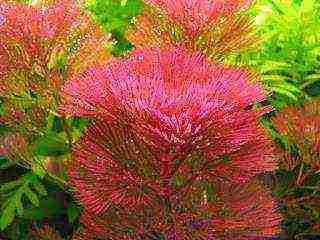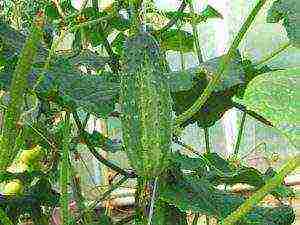Content [show]
Sideration is an agro-technological technique that allows you to maintain and increase soil fertility and reduce or completely eliminate the introduction of chemical fertilizers. For this, green manure plants are used, which not only are a source of nutrients for the main crops, but also heal the soil.
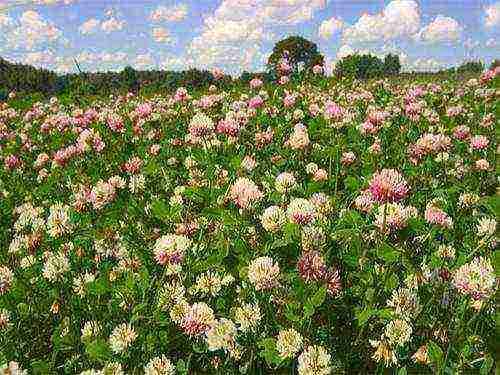
Why do you need sideration?
Green manure is a source of nitrogen, starches, proteins and sugars. In addition, they accumulate hard-to-reach elements such as magnesium, sulfur, phosphorus, magnesium and calcium. If they are not grown in the area where the main crop is sown or planted, then their green mass is used. It can be composted or used as mulch. But the full benefit of green manures can be obtained by growing them as a catch or supplementary crop. In this case, not only the green mass is beneficial, but also the roots of the fertilizer plants.
The root system of green manure does not allow the soil to overcompact, improves its water permeability, and also helps to fight some pests, for example, a bear. The root canals can reach up to 6 meters in depth, which improves the mechanical structure of deep soil layers and prevents it from being washed out. Dead roots feed on microbes that accumulate nitrogen and worms. Worms also fertilize and loosen the soil.
What plants are green manure
There are about four hundred plants that are used for green manure. List of their types:
- cruciferous (cabbage);
- legumes;
- buckwheat;
- cereals;
- amaranth;
- aster.
The most common legumes are peas and vetch, alfalfa and clover, sweet clover, soybeans and lentils. All siderates from the legume family are nitrogen fixers. This is due to the fact that special bacteria live on their roots, capable of retaining nitrogen, as well as transferring it from air bubbles in the soil to a plant, in a form convenient for assimilation. Thus, nitrogen is absorbed and converted into green mass, which is used as green fertilizers.
Cruciferous siderates are mustard, rape, rapeseed and oil radish. They are popular among gardeners because they are unpretentious to the type of soil and the content of trace elements in it. They are planted to improve the soil: to combat some pests and diseases. For example, mustard accumulates sulfur, so slugs, nematodes, pea moth and wireworm leave the beds where this culture grows.
Grain green manures enrich the soil with potassium, inhibit the growth of weeds and keep the fertile layer from washing out and weathering. In addition, some plants prevent the development of diseases. For example, oats protects plants from the development of root rot, rye inhibits the development of phytophthora in the soil.
It is good to sow rye in waterlogged areas, as it dries out the soil.
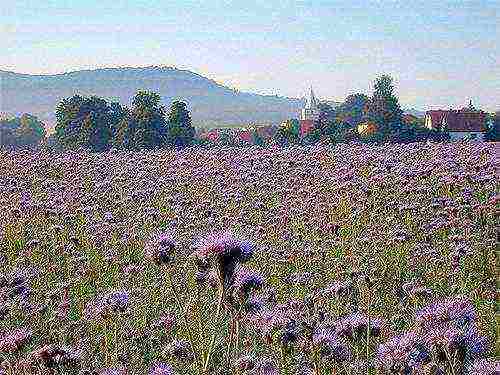
Which green manure is better
To get the most out of green manure, you need to know which plant is best for this purpose. To do this, you need to take into account several points:
- acidity and type of soil;
- previous and subsequent major crops;
- how and for what purpose the green manure will be used.
For example, if it is planned to plant cabbage on the site, then mustard or rapeseed will not be suitable for green manure, because these are plants from the same family. They suffer from the same diseases and attract the same pests. But legumes - chickpeas, peas, clover, will saturate the soil with nitrogen, and calendula or phacelia will help with soil reorganization. Below is a table of which green manure to sow in the country, based on the predecessor crops.
| mustard | potato |
| buckwheat | legumes, grains |
| Clover | any |
| lupine | cereals, annual grasses |
| phacelia | tomatoes, potatoes, cucumbers, |
| sainfoin | any |
| rape | cereals and annual grasses |
| oil radish | early vegetables, winter crops, grapes |
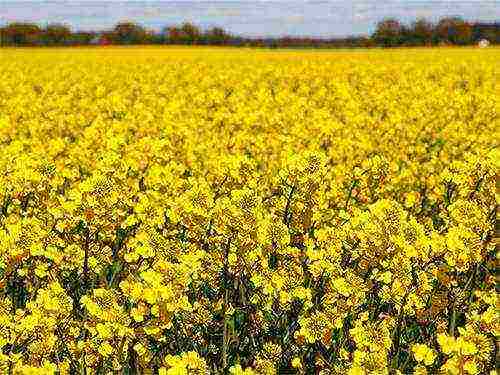
Soil acidity and composition
Most agricultural crops prefer soil with neutral acidity (pH) or with small deviations from it - from 6.2 to 7.5. The increased content of alkaline salts or acids in the soil prevents the development of soil-forming bacteria and the absorption of nutrients by plants. The herbs that are used for green manure also have their own preferences. For example, sowing legumes in an area with high acidity does not make sense, since the bacteria that help to assimilate nitrogen will die, and the plants will not receive the necessary nutrients. Cruciferous (cabbage) in conditions of high acidity get sick with keel, because such an environment is preferred by the parasitic fungus, the causative agent of Plasmodiophora brassicae infection.
But, just when the pH value deviates from the norm, green manure is necessary for the soil. This is one of the necessary agricultural practices, since without it, farming leads to the depletion of land. In the absence of green fertilizer, and, accordingly, organic matter, the natural mechanism of self-regulation is disrupted. After all, we harvest, leaving the land devastated, without the necessary elements, which leads to impoverishment of the soil and disruption of the acid balance.
Sowing with green manure allows you to replenish the reserves of trace elements after each harvest, which over time leads to the normalization of the acid-base balance and an increase in yield. You can choose herbs, depending on the acidity of the soil, in accordance with the table.
| sour | oats, buckwheat, lupine |
| slightly acidic | clover, oil radish, seradella |
| neutral | vetch, sweet clover |
| salt marshes | amaranth, sweet clover, sainfoin |
| slightly alkaline | mustard, alfalfa, chickpeas |
| podzolic | beans |
To achieve maximum efficiency from sowing herbs - green fertilizers, you also need to select a crop depending on the type of soil. Some grasses can be sown on any soil, and some are demanding on the structure and composition of the soil. In the table below, you can choose the right crop, depending on the site.
| peat | oats |
| sandy | sweet clover, lupine |
| loamy | sweet clover, rapeseed, alfalfa, oil radish, rye |
| sandy loam | oats, oil radish |
| clayey | beans, rapeseed |
Mustard, phacelia, rape, sunflower can be planted on any soil.

How and when to sow green manure
The timing of sowing seeds for greening depends on the type of sowing. There are several crops:
- independent (green manure);
- mixed (compacted);
- insert (intermediate);
- undersowing;
- rocker;
- stubbly.
Self-sowing involves the use of the site throughout the season only for green manure. The use of such a technique is justified on uncultivated or low-fertile soils. In this case, the seeds are sown at the time most suitable for green fertilization. When the plants reach the required maturity, the green mass is gaining, but the seed ripening has not yet begun, the sowing is mowed and plowed. To domesticate the site, green manure is sown for 2-5 years.The green mass can be partially used for mulching in other areas. For such crops, both perennial and annual crops, including winter crops, are suitable.
Advice
It is undesirable to allow grasses to overripe, because coarse stems decompose much longer than young plants. In this case, the semi-rotten mass becomes a breeding ground for parasitic fungi and various infections, which leads to soil contamination. This aspect is relevant for any type of sowing.
Intermediate sowing allows the site to be used for the main crop. For this type of greening, only annual grasses are used. They are sown after harvesting the main crop. Backroom cultivation is the alternation of strips of main and green manure crops in one field (plot). This technique is indispensable on the slopes. The strips are located across the slope, which prevents soil washout. Gardens also use curtain grass sowing in rows between trees. For sowing, the seeds of perennial plants are mainly used.
It is possible to grow the main crop and green manure together on the same field - mixed sowing. In this case, the plants are selected in such a way that they do not oppress each other. This requires that their root system penetrates to different depths. Siderata can be sown under the cover of the main crop or between rows. Underseeding or stubble cultivation of green manure grasses also makes it possible to effectively use the cultivated area. Overseeding sowing - during the growing season, grasses develop under the cover of the main crop, stubble sowing - green manure seeds are sown immediately after harvesting.
When to sow green manure, you can find out from the table. There are times for the most commonly used seeds.
| vetch spring | all March or from June 5 to July 20 | 3 months |
| spring rape | March-August | 1-1.5 months |
| phacelia | March-August | 1-1.5 months |
| mustard | March-August | 1-1.5 months |
| donik | March-August | 2-3 months |
| fodder peas (pelushka) | March 20-August 15 | 1.5 months |
| Clover | april-august | mowing 14 days before planting the main crop |
| lupine | April | 1.5 months |
| alfalfa | April 20 - May 15, July 15 - August 15 | 1.5 months |
| oil radish | april-august | 1.5-2 months |
| winter rape | 20 days before sowing winter cereals | mowing in early spring next year |
| rye | August 25-September 20 | mowing in the spring-summer period of the next year |
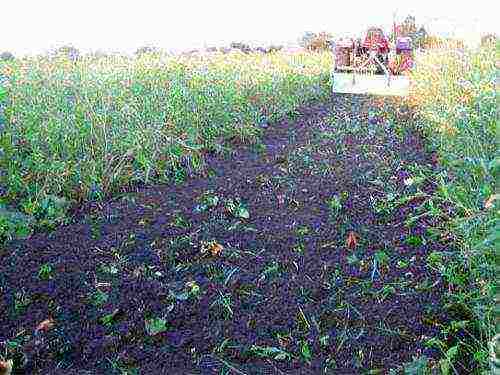
How to prepare fertilizer from green manure plants
Do I need to dig up siderates? The answer to this question depends on the form in which the natural fertilizer will be applied and at what time the mowing is performed. Green manure from green manure grasses can be applied in the following forms:
- In its natural form, when the green mass is dug up or plowed into the ground.
- In the form of humus, preparing compost.
- Like liquid fertilizer.
The plowing of green manure can be full, cut and aftermath. In the first case, all the green mass and roots of plants are plowed into the ground, with mowing, only the green mass, and with the aftermath, the roots and root part of the plants. Mowing plowing is practiced when sowing by wings and in all cases when green manure is mowed in other areas.
Advice
When plowing green mass in the autumn, it should be borne in mind that plants decompose poorly in cold weather. Some agronomists advise leaving the cuttings on top of the beds. If a winter crop was chosen as a green fertilizer, then it is better to mow it in the spring.
Compost fertilization takes time to ripen. It is prepared from the green and root mass of plants. Fallen leaves and tops from the beds can also be added there. The main thing is to make sure that no infected plants and seeds or weed roots get into the compost heap.
The experience of using liquid fertilizer is interesting. In this case, the mown green mass of green manure is folded into a container and filled with water.The resulting mixture is closed with a loose lid (for gas exchange) and left for 8-10 days. When laying the herbs, it must be borne in mind that during fermentation the level of the mixture will increase, so you cannot fill the container to the top. The resulting infusion is diluted with water 1:10 and fertilized by watering.

Sideration as part of natural farming
Growing green manures is not a new method, but rather a well-forgotten old one. The return of interest in this method of enriching the soil with the necessary elements is due to the fact that the long-term use of mineral fertilizers has led to the depletion and reduction of the fertile layer. After all, sowing herbs not only ensures the introduction of fertilizers, but also provides the necessary mass of organic matter, creates a favorable environment for bacteria and worms, which improve the structure and composition of the soil.
In addition, green manures attract pollinating insects, inhibit the growth of weeds, raise minerals from deep layers and, thanks to their phytoncidal effect, scare away many pests. Thus, the use of chemicals can be either completely eliminated or minimized. Taking care of the seeds for green fertilizers in advance, taking into account the acidity of the soil, its composition and other parameters, it is possible to improve the quality, yield and environmental friendliness of the grown products.
Green manure plants, or green manures, are an effective natural fertilizer. These plants are sown on a vacant plot in a vegetable garden or in a bed with major crops. Then a lush green mass, which grows very intensively and quickly, without digging, is cut and buried in the ground.
This technique allows you to enrich the soil with valuable nitrogen, inhibits the growth of weeds, and prevents the spread of bacterial and fungal diseases. It is also a good alternative to chemical fertilizers and a suitable option for adherents of natural farming. You haven't practiced sowing green manure yet? Well, it's time to get started!
The most commonly used siderates are:
- legumes crops - field and fodder peas, fodder beans, soybeans, lentils, chickpeas, beans, clover, spring vetch, annual lupine, alfalfa, seradella, sainfoin, sweet clover;
- cereals crops - spring oats and barley, winter wheat and rye, millet, sorghum; as part of mixtures - ryegrass, fescue, timothy;
- cruciferous plants - mustard, colza, rapeseed, oil radish;
- hydrophilic - phacelia;
- aster - sunflower, marigold;
- buckwheat - buckwheat;
- amaranth - amaranth, squid.
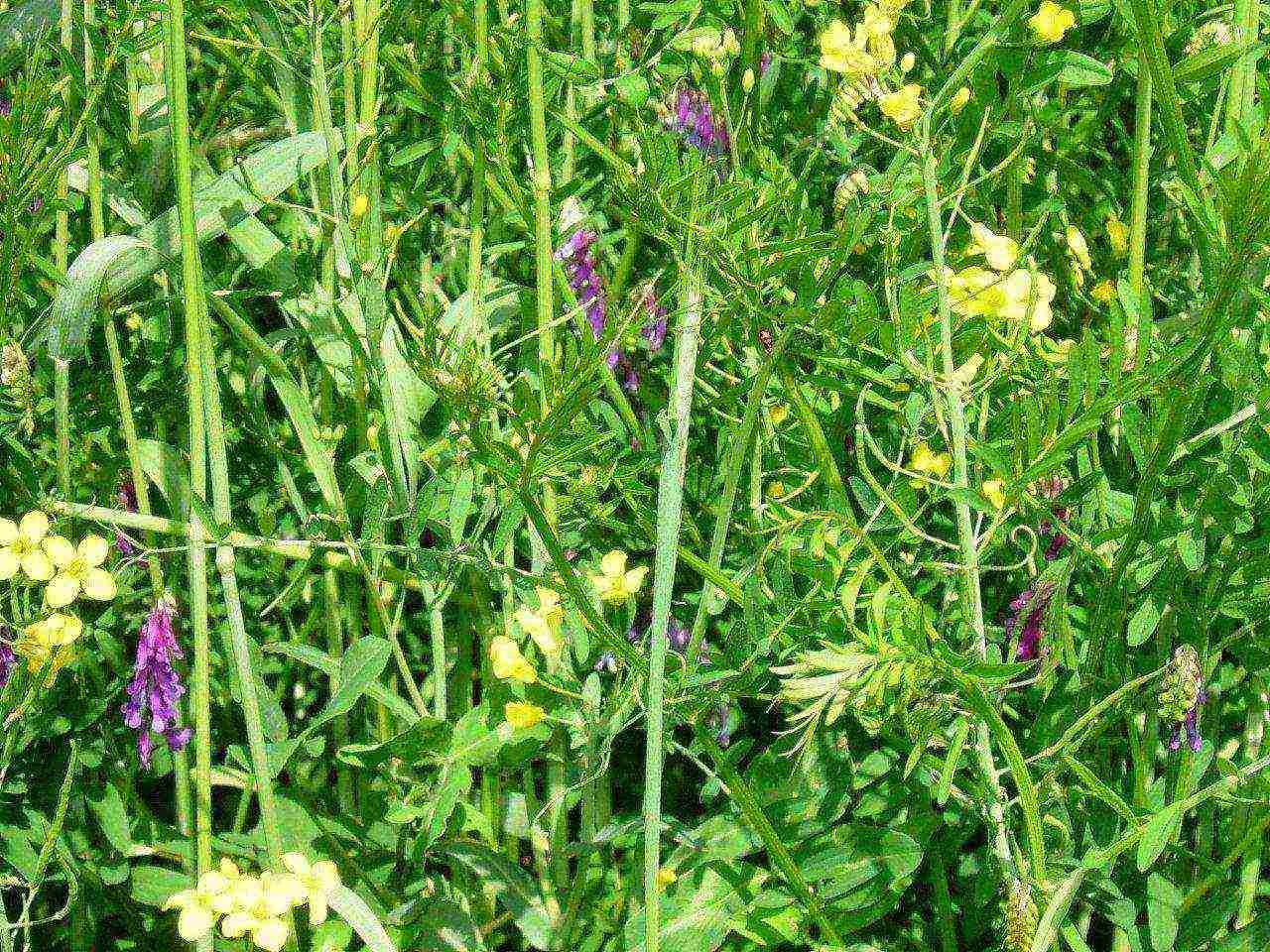
If you do not want the siderates to scatter over the site and turn into annoying weeds, mow them before the flowers appear
Green manure plants enrich the soil with useful micro- and macroelements and organic substances, improve the properties and structure of the soil, air and water permeability, prevent erosion (weathering and leaching), and in addition, they act selectively on different types of soils, changing their composition and acidity. Experienced farmers say that the land should never be empty. Therefore, it is recommended to plant green manures not only together with cultivated plants, but also after harvesting them.
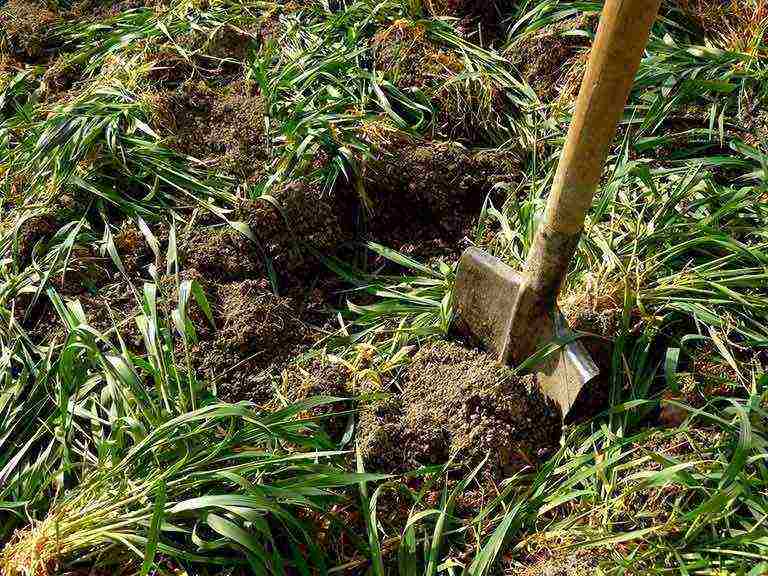
Legumes you can sow any soil, from light sandy to very heavy and dense. These plants loosen the soil and saturate it with nitrogen, prevent the growth of weeds and clear the area of nematodes. In their effect on soil quality, these plants are similar to fresh manure.
Cereals "Work" on any type of soil, including loamy and high sand content. These plants improve the permeability of the soil, replenish the content of potassium and nitrogen in it, and prevent soil leaching and weathering. The most preferable planting of cereal green manure on acidic soils.
The associated action of cereals is the suppression of the growth of weeds. This is due to the branched root system, through which weeds do not have enough strength.
Cruciferous green manure improves the quality of any soil, only soil with high acidity is not suitable for them. They build up a lush green mass and their roots act as a natural baking powder. In addition, they make phosphorus compounds difficult to assimilate by cultivated plants available for absorption and prevent the leaching of other minerals from the soil.
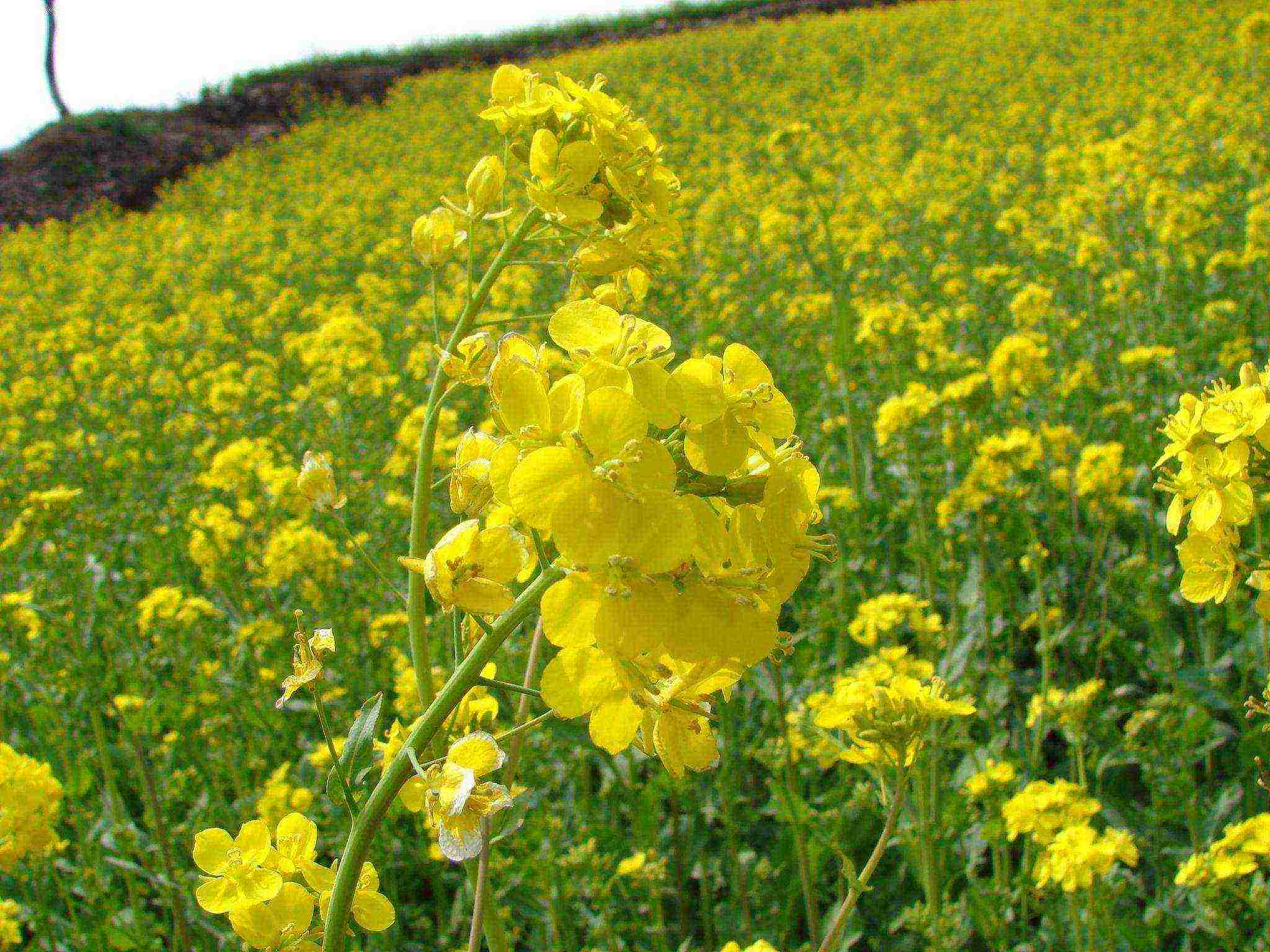
Compared to other green manures, rape is the most capricious. It develops poorly on poor and waterlogged soils with high acidity.
Cruciferous siderates (radish, rapeseed and mustard) should never be sown in front of cabbage: because of the mutual "conflict" between these biological relatives, the harvest of cabbages cannot be expected.
Hydrophilic plants are a reliable "weapon" against weeds and pathogenic bacteria. They improve the aeration of the soil, making it lighter, and reduce the acidity towards neutral values.
Buckwheat green manures make the soil lighter, enrich poor, barren land with organic compounds, phosphorus and potassium.
Rootsamaranth loosen the soil, increase its fertility, supply the roots of neighboring cultivated plants with the missing nitrogen.
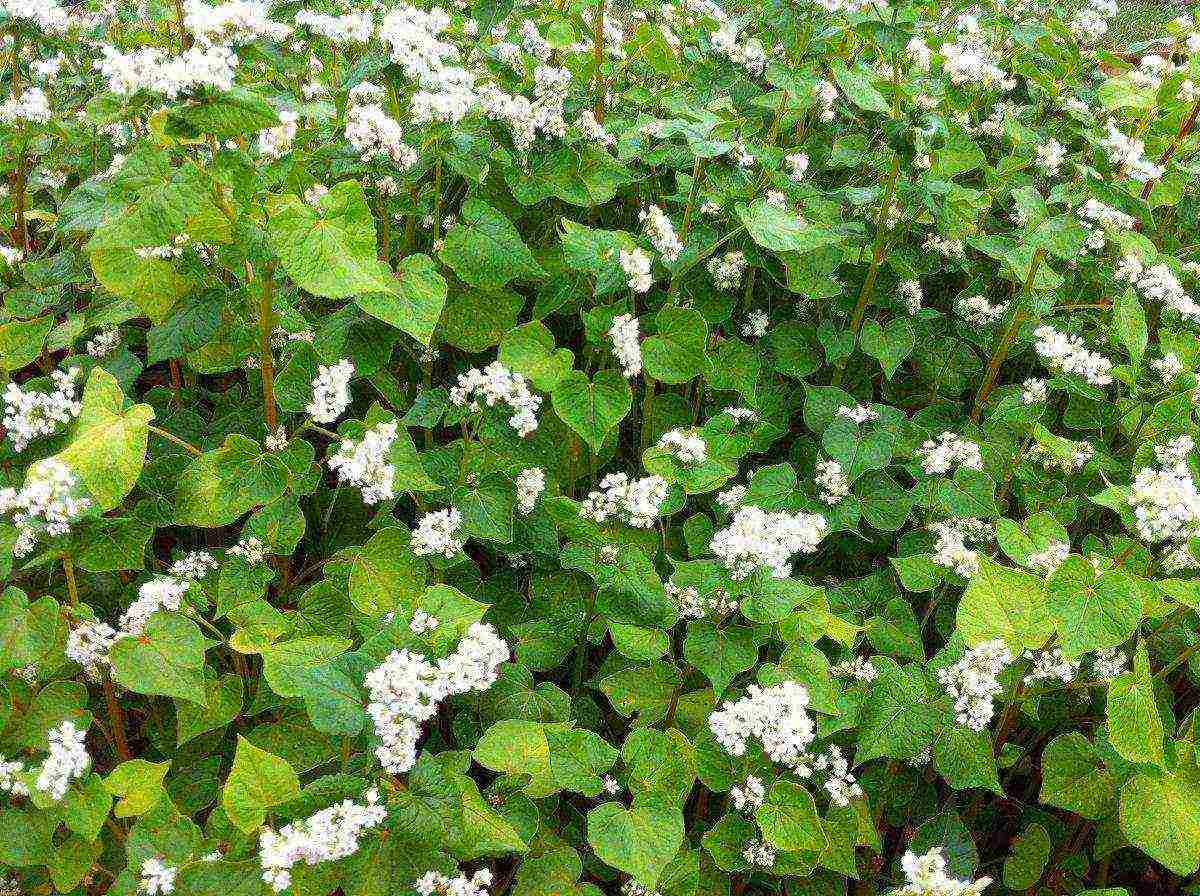
Buckwheat loosens the ground no worse than a garden hoe
Mustard as siderat
A plant very popular with gardeners. Mustard can be sown from spring to autumn. In the spring this is done very early, as soon as the snow melts, since the plant is afraid of cold weather. The period from sowing seeds to technical maturity is 1.5-2 months, the main crops can be sown as early as 2 weeks after mowing and plowing. Lush greenery grows quickly, gives a light shade to young shoots of cultivated plants, but drowns out the growth of weeds.
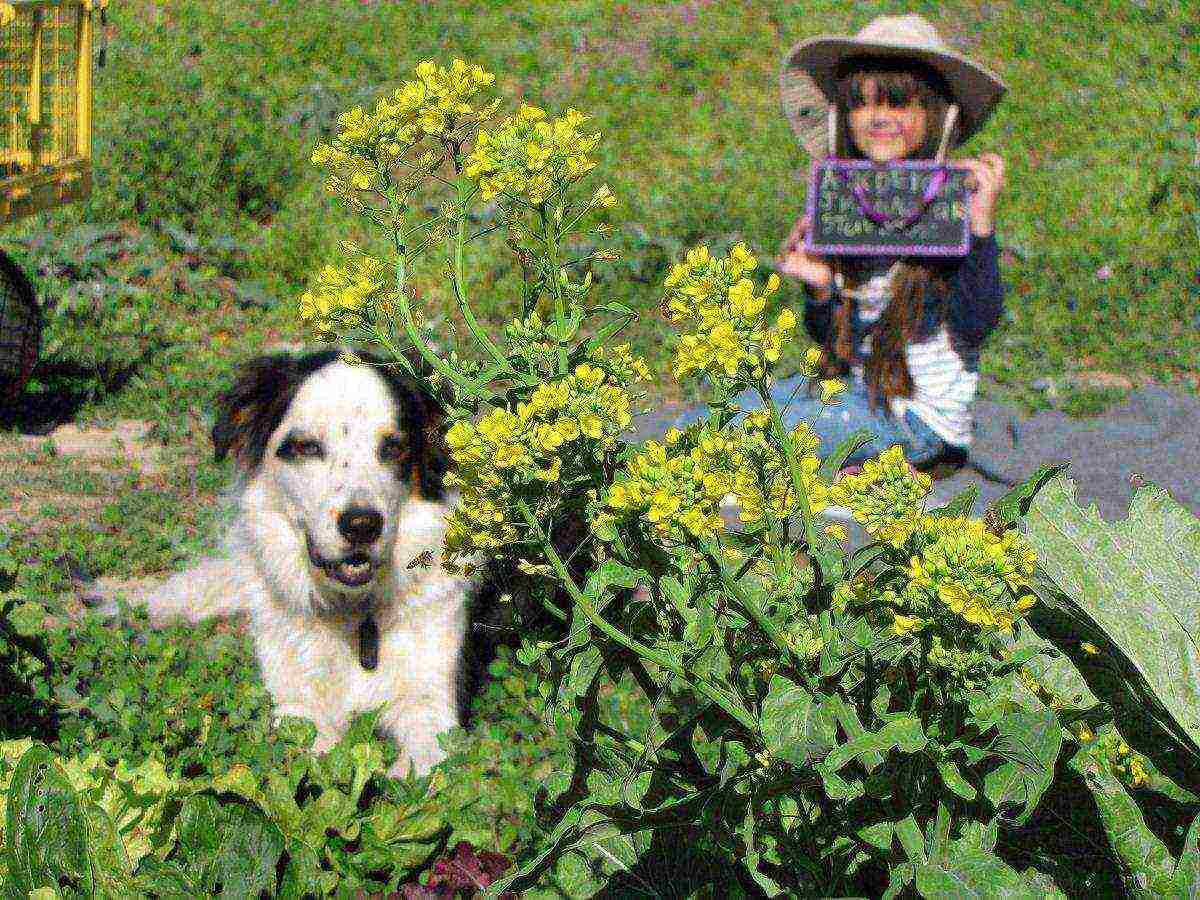
When grown in beds, the mustard tops are cut off when its height reaches the growth of cultivated plants
IN summer time it is good to sow mustard on crops that take longer to ripen - peppers, tomatoes, eggplants. In addition, it is an indispensable tool in the fight against scab and late blight, which means it is a welcome "guest" in the beds with these crops and potatoes.
For the winter mustard seeds are sown in September, after the crop is harvested from the garden. In this case, the tops are cut only in the spring. Moreover, it is so tender in mustard and decomposes so quickly that it is not even buried in the ground.
Mustard seeds are sown in rows with an interval of 10-15 cm between them or randomly. The sowing rate of seeds in the first case is 1-1.5 g / m2, with spilling - 3-4 g / m2.
Phacelia as a siderat
Universal green manure, after which any vegetables and berries will feel very comfortable. Phacelia is unpretentious, cold and drought resistant, characterized by rapid growth and decorativeness.
Phacelia seeds are sown in the spring, immediately after the snow melts. Sowing rate - 1.5-2 g / m2. Grows well on clay, sandy, peaty and even rocky soil. Sown for the winter, phacelia will protect the soil from deep freezing. It loosens soils that are dense in structure, strengthens light soil, while reducing acidity.
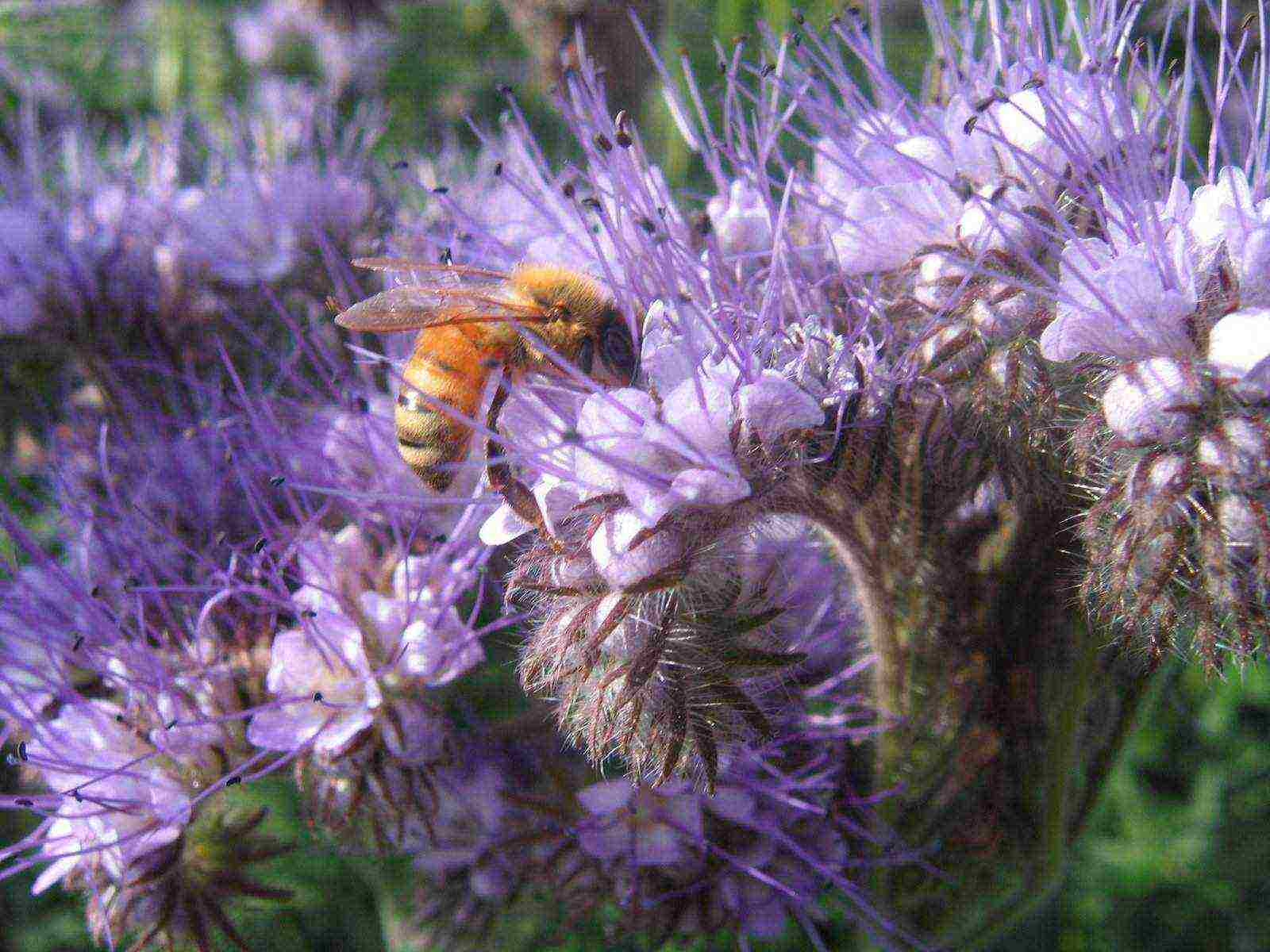
Phacelia is a good honey plant and attracts pollinating insects to the site
Phytoncides contained in plant tissues suppress the reproduction of dangerous bacteria and fungi in the soil, causative agents of rot, scab and late blight. In addition, they scare away aphids, moths, wireworms, and nematodes. The green mass, which is rich in nitrogen and other minerals, is cut 45-50 days after sowing, when flowering begins. Close up to a depth of 10 cm. When planting seedlings, phacelia need not be mowed - it will protect young plants from wind and possible frost. After a while, the greens are cut and used as garden mulch.
Clover as a siderat
Clover prefers moist soil with a low level of acidity. Like other legumes, it saturates the soil with organic matter, nitrogen and other minerals.The roots protect the soil from weathering and leaching, at the same time loosen the soil, making it light, friable, rich in oxygen and moisture.
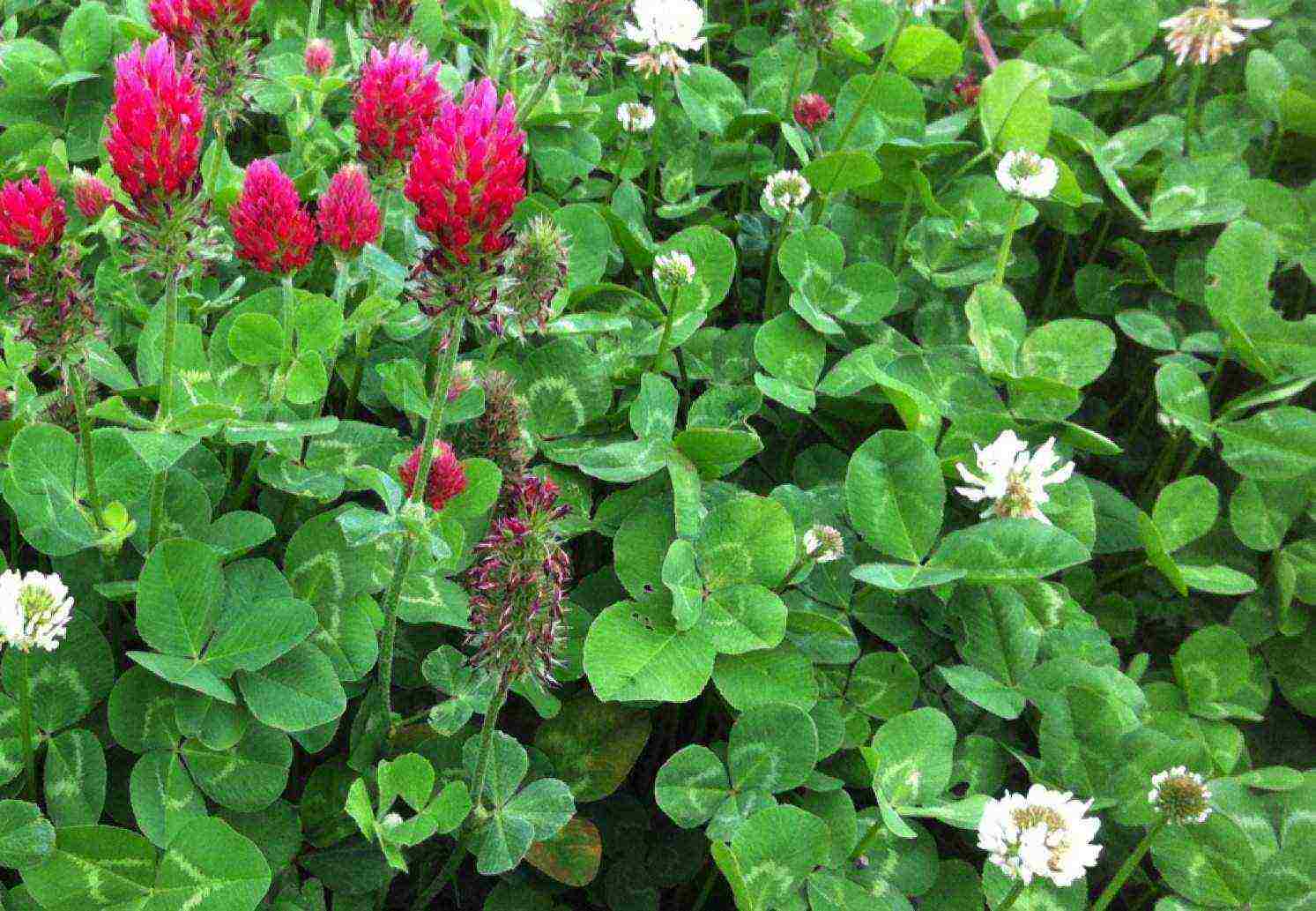
Clover is recommended to be embedded in the soil just before flowering, during the period of mass bud formation - at this time the plants are richest in nitrogen.
By aiding the activity of beneficial soil bacteria, clover promotes the formation of beneficial humus. However, soils with high acidity or too salty clover are not suitable. Loves moisture, but not excessive. Sowing is carried out in early spring (March-April), with summer sowing it is necessary to ensure sufficient watering. Seeding rate - 2 g / sq.m.
The greens are mowed shortly before the beginning of flowering, and 2-3 weeks after that you can plant the main crops - eggplants, tomatoes, cucumbers, potatoes, cabbage. The only exceptions are legumes, since they are infected with the same diseases, and they have common pests.
Lupine as a siderat
Lupine is notable for the fact that special nitrogen-fixing bacteria live on its long (up to 2 m) roots, which absorb nitrogen from the deep layers of the soil, and then give it to the upper ones. In addition, lupine makes difficult-to-digest phosphate compounds available to other crops.
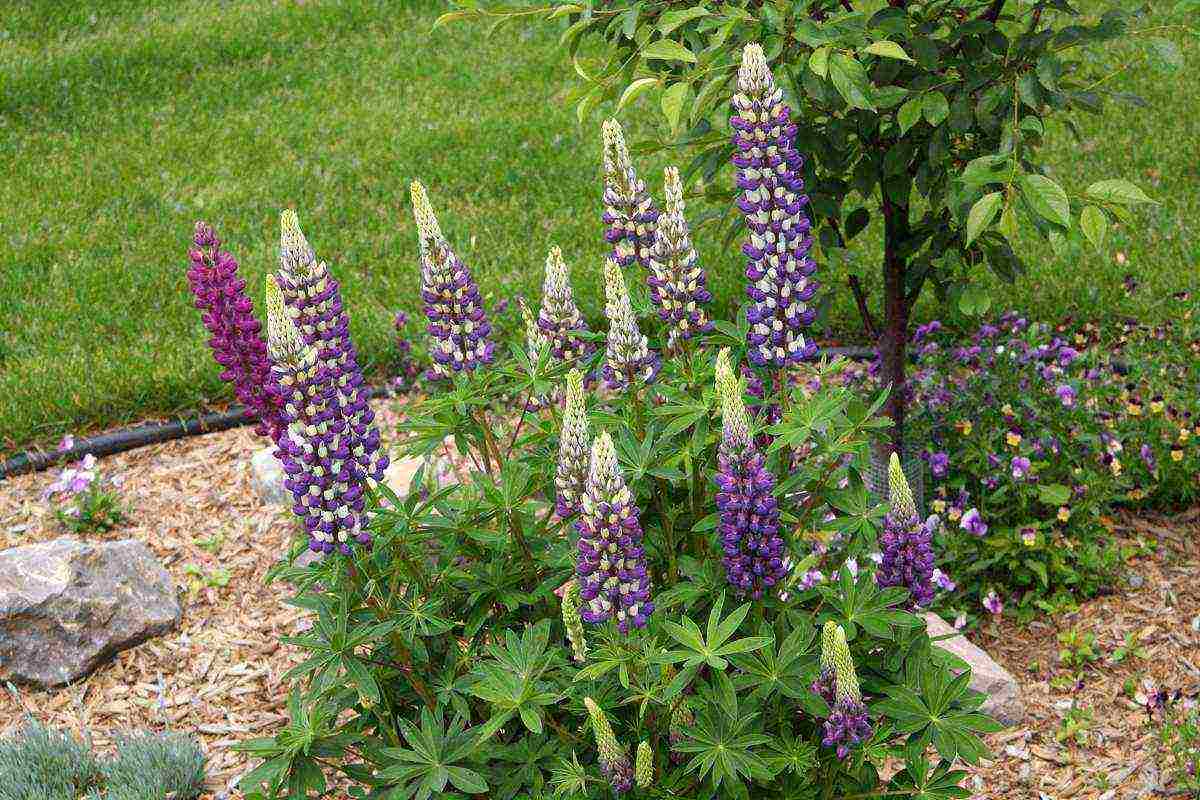
Thanks to lupine, the soil becomes less dense, its acidity decreases, and the ability to accumulate and transmit moisture improves.
Different types and varieties of lupine prefer different types of soil: plants with white flowers thrive on loam and sandy soils. The more common purple lupine loves acidic soils more, in contrast to the yellow-flowered soil that is undemanding to the composition of the soil, which only needs good moisture. Lupine is sown in early May. The green mass is ready for mowing 6-8 weeks after germination, until the stems are coarse. The green mass is embedded in the soil to a depth of 5-6 cm. The seeding rate of seeds is 20-30 g / m2.
Oats as green manure
Like all cereals, oats enrich the soil with valuable organic matter, as well as macronutrients - phosphorus and potassium. To saturate the soil with the necessary amount of nitrogen, it is good to sow oats in a complex mixture with rapidly growing spring vetch or peas. It grows on soils of different types - from sandy and clayey to peat and black soil.
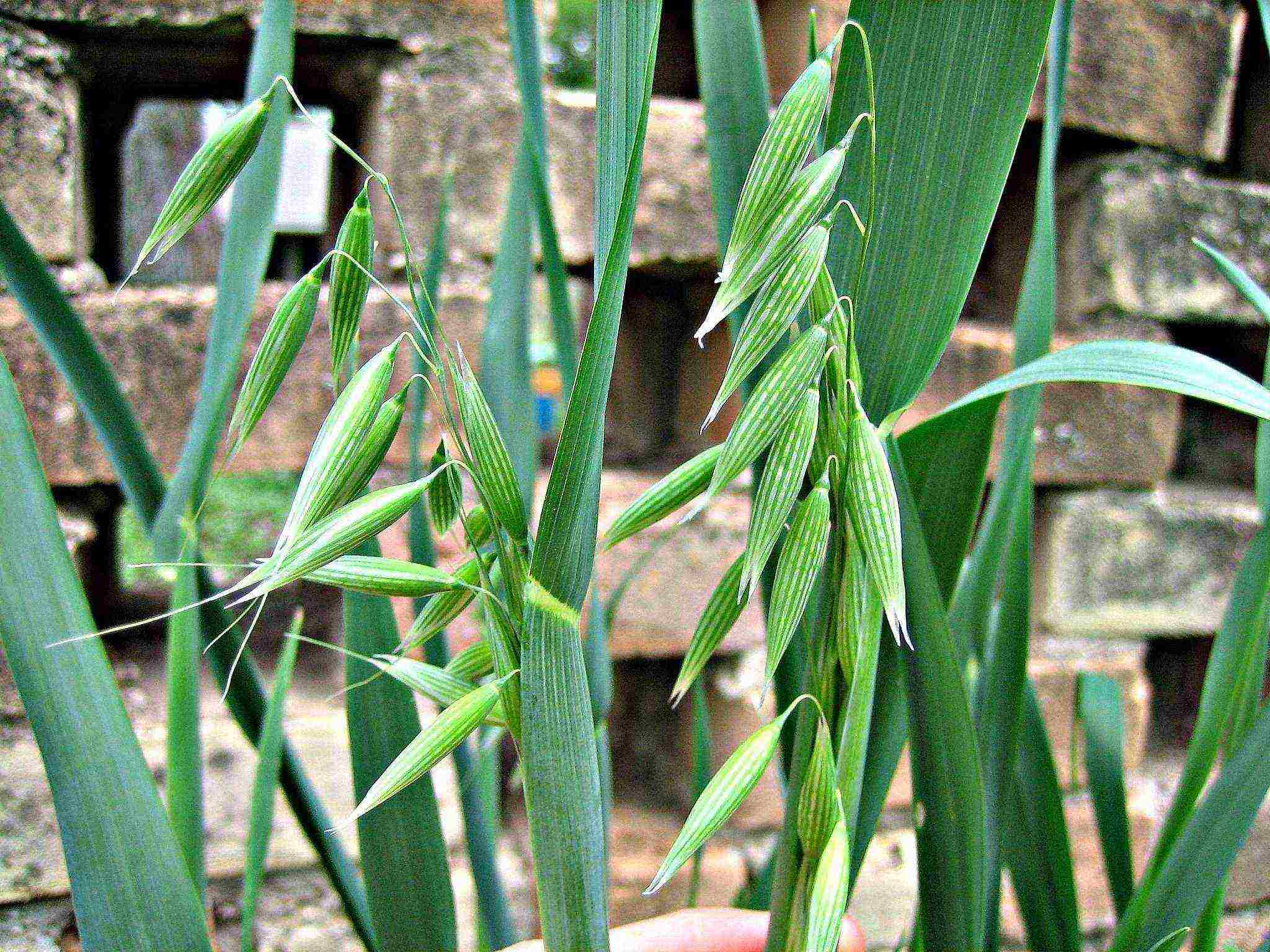
In terms of efficiency and ability to fertilize the soil, oats are similar to manure.
The root system of oats is able to loosen dense soil, providing air and moisture to the inner layers. Thanks to the strengthening properties of the roots, the light soils will protect the oats from erosion and facilitate the absorption of moisture by the plants. In addition, the roots of this cereal contain a substance that can suppress pathogens of root rot, bacterial and fungal diseases. Oats are sown in mid-spring (usually in April). The latest sowing date (before winter) is the first half of September. When sowing in rows, the seeding rate is 10 g / m2. The scattering method requires an increase in consumption up to 15-20 g / m2. The depth of planting grains into the soil is 3-4 cm.
Green manure plants are sown throughout the year, and since they have short growing periods, up to 3-4 harvests of useful green fertilizers can be obtained per year.
- In the spring... At this time of the year, the green mass of green manure grows rapidly and simply does not allow the weeds to manage in the beds with cultivated plants. The most popular early siderates are mustard, sweet clover, seradella, radish, oats, phacelia, peas, vetch, and alfalfa.
- Summer or at the beginning of autumn... After harvesting the main crops, to restore fertility and other valuable properties of the soil. At this time, plants of the Cruciferous family are sown - rapeseed, mustard, radish, colza, as well as legumes, buckwheat and phacelia.
- In late autumn (before winter)... The end of the gardening season is the time to sow winter oats, rye and other cereals, vetch, clover, lupine (including in mixtures), as well as phacelia.Radish, mustard and rapeseed are also sown in anticipation of the coming winter and are no longer mowed so that the soil does not freeze in winter.
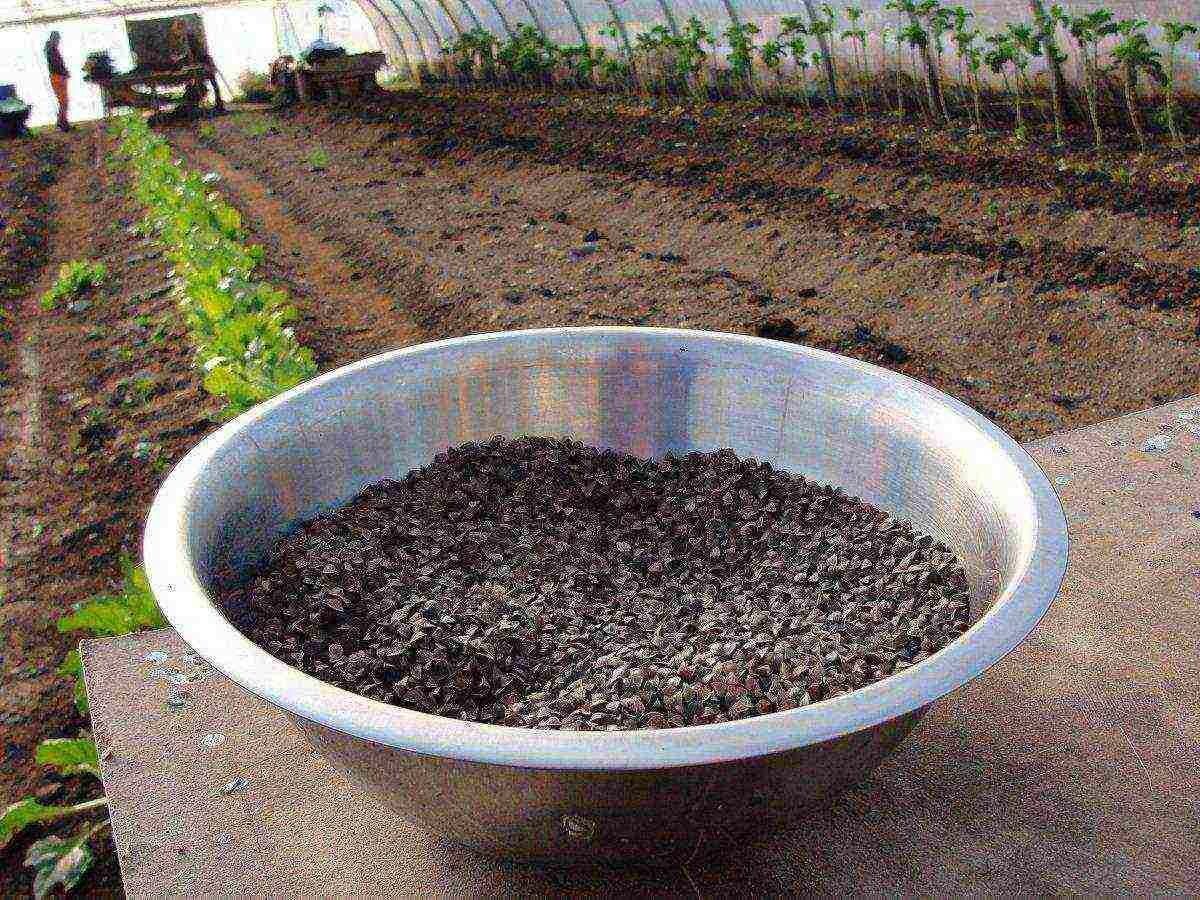
Choose a place for sowing green manure depending on the goals you are pursuing.
- Free space... If the land is not occupied, the sown green manure will prepare it for future plantings - "feed" and enrich the composition.
- In the garden... In spring, siderates should be sown before planting seedlings, in summer - after harvesting the main crops, so that the bed is not empty. Sowing aromatic plants (mustard, radish, etc.) along the perimeter of the beds will scare away harmful insects from planting.
- In the aisles... The best way to disembark. First of all, it will protect against "uncontrolled" weed growth. Secondly, it will not allow the soil to crumble under the influence of wind and rain. And finally, a dense "wall" of green manure is a reliable protection against pests and good mulch after cutting.
- Between the trees... Siderata sown in tree trunks are not just a decoration, but also a natural mulch, which, after mowing, provides plants with nutrition, prevents moisture from evaporating and weeds grow.
Optimal green manure for cucumbers
The root system of cucumbers does not develop in depth, so it is difficult for the borage to absorb nutrients from the deep layers of the soil. Delivery and accumulation of nutrients (magnesium, phosphorus, calcium, nitrogen) in the surface layer of the soil is the main "task" of cucumber green manure. The best for cucumbers are recognized:
- legumes - peas, vetch, clover, lupine, chickpeas, sweet clover, alfalfa;
- cereals - barley, wheat, oats;
- cruciferous - rapeseed, mustard, rape.
Sow these plants in the aisles of cucumbers - and you will be pleasantly surprised by the taste of the harvested fruits.
The best siderates for potatoes
The main tasks in growing potatoes are to prevent the spread of diseases and the invasion of harmful insects on the plantations. Therefore, siderates for tubers must be sown, taking into account these requirements. The best "allies" of the potato:
- legumes - clover, lupine, peas, beans, beans;
- flax - flax;
- cruciferous - mustard, rapeseed, radish.
- borage - phacelia.
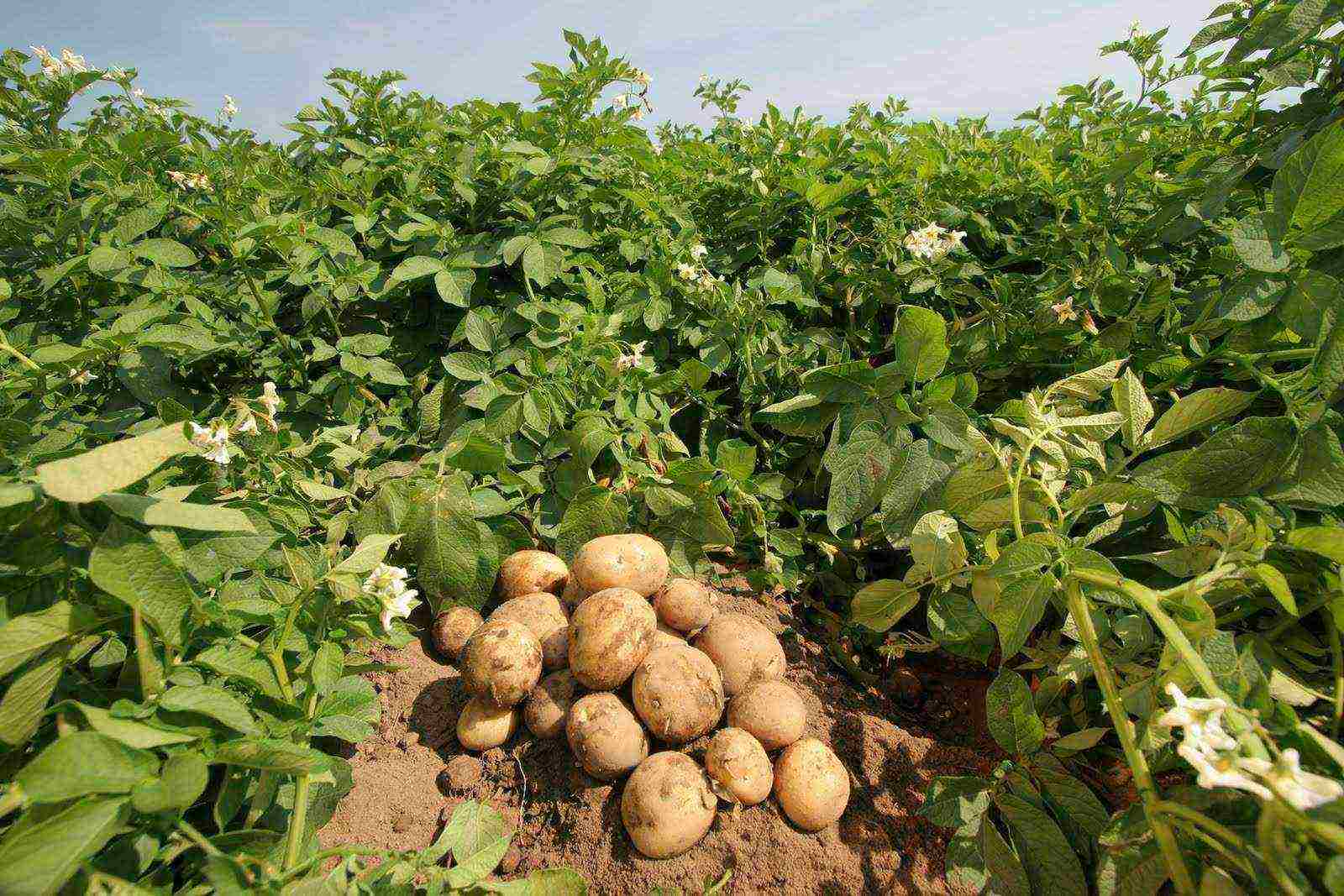
It is better to sow under potatoes not a monoculture, but their mixtures. The most effective are a mixture of peas with oats or barley. Phacelia mixed with mustard will banish the wireworm. But cereals are bad neighbors for potatoes, because, on the contrary, they attract wireworms. Alfalfa, vetch, or honey clover will fertilize a potato patch just like manure.
Siderata for tomatoes
Tomato siderates make the soil loose, enrich it with nitrogen and minerals, and reduce the growth of weeds. The most suitable for nightshade green manure is the universal phacelia. It grows quickly, "does not give passage" to weeds, its stems and leaves are easily decomposed, enriching the soil, and the unusual shape of the flowers just look beautiful in the garden.
Suitable for tomatoes:
- all legumes and cruciferous crops;
- cereals - wheat, oats, rye.

Siderata for cabbage
Cabbage is a big lover of the soil saturated with nitrogen, therefore green manure crops are suitable for it - "suppliers" of this macroelement to the soil - peas, lupine, clover, alfalfa, sweet clover.
Lupine and clover in the company of phacelia will drive away wireworms, nematodes and other annoying pests. Alfalfa sweet clover and oats planted between rows neutralize pathogens.
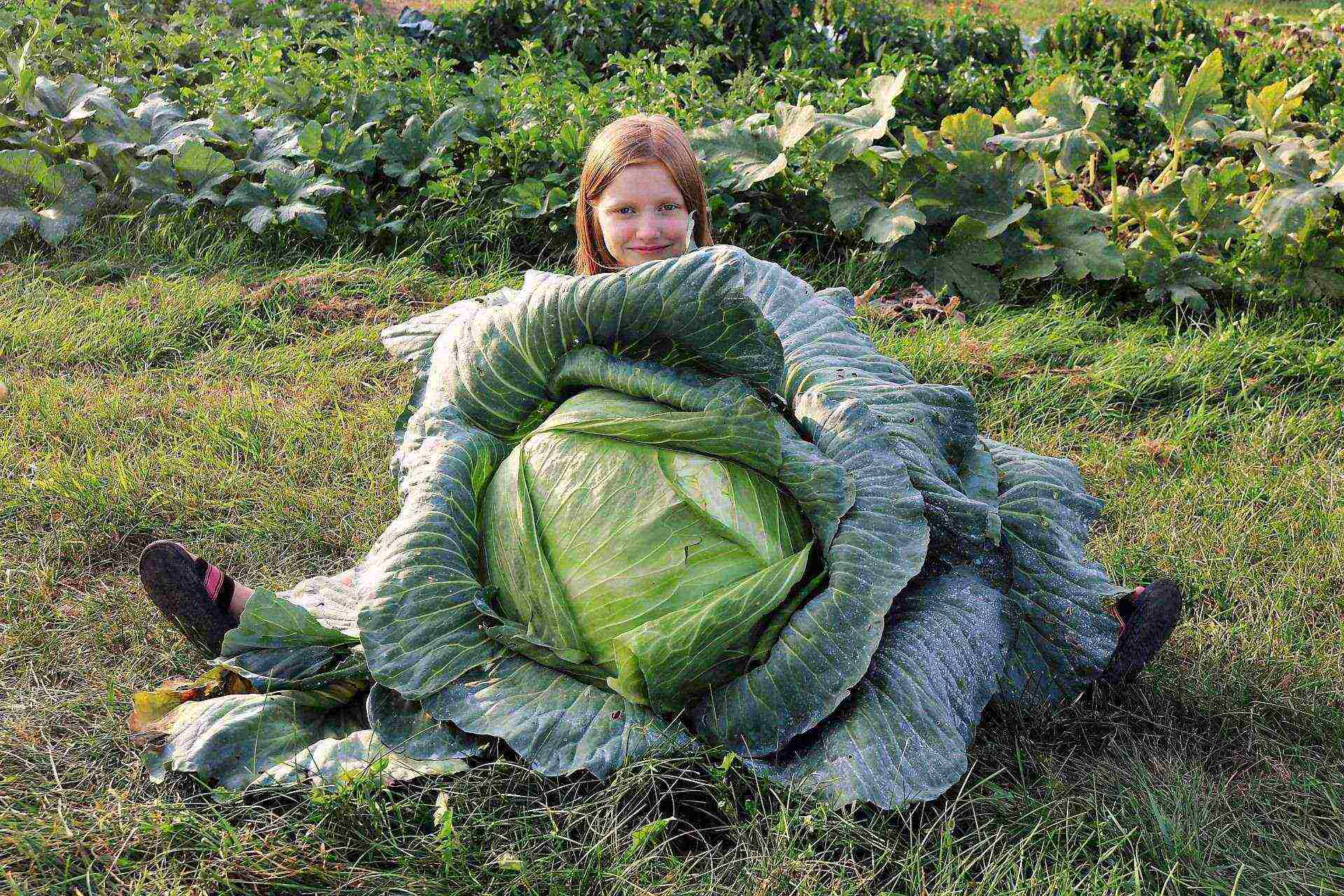
It must be remembered that green manure should not be from the same family with cultivated plants, since such close "neighbors" can get sick and infect each other with the same diseases.
The healing effect of green manure is an additional bonus in the collection of their useful properties.
For example leaves flax contain tannin, the smell of which will drive the Colorado potato beetle away, so it is good to plant the plant next to a potato plantation.
Colorado potato beetle is afraid of smell like fire marigold, therefore, in the aisles of potatoes and eggplants, it has its very place.
Disembarkation rye after the potato - a good tactical move in the war with the nematode. Rye roots secrete a special substance that will ward off the pest from the garden for a long time.
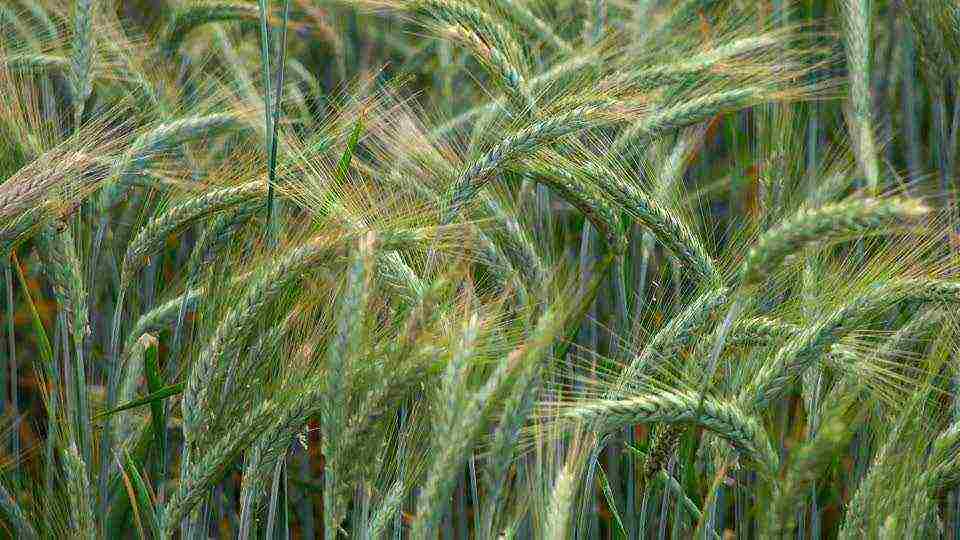
Rye is an excellent natural orderly, suppressing the growth of weeds
Phytosanitary functions are performed by mustard and radish - they do not allow weeds to grow, and the pungent smell of spicy plants has a neutralizing effect on pathogenic microorganisms in the soil.
Phacelia prevents the spread of fungal infections - late blight, various types of rot, and also scares away wireworms (click beetle larvae). Oats, the roots of which contain a substance with a fungicidal effect, will just as well cope with rot.
Marigold or Dill, planted next to a strawberry garden, are very fragrant, which many parasitic insects do not like at all.
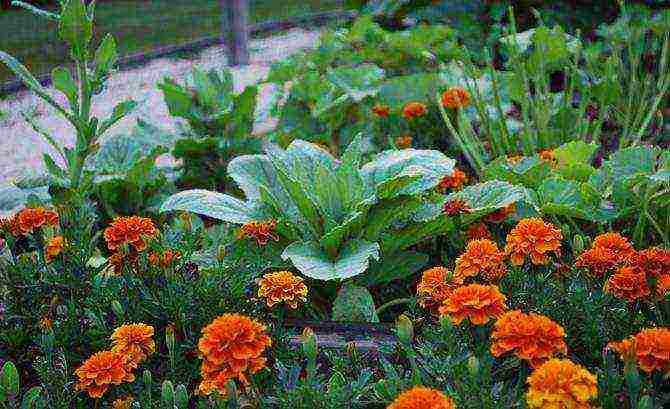
Marigolds disinfect the soil and scare off nematodes. Also, the smell of these flowers is not like bugs, aphids, flea beetles, a bear and a Colorado potato beetle.
Many kinds lupine - a reliable remedy for root rot, potato scab, nematodes. So its proximity to vegetables and root crops in the garden is not only pleasing to the eye, but also has a "therapeutic" effect.
Has a sanitary effect sweet clover - this plant with fragrant flowers will not allow wireworms, nematodes to your crops, and will also defeat root rot. In addition, the mown green mass of the plant improves the activity of beneficial microorganisms in the soil. And sweet clover is a wonderful honey plant, it will attract pollinating insects to your beds.
Substances that make up alfalfa, - natural antiseptics. So neither the weeds nor the harmful nematodes of the company will be happy with her. Beneficial soil bacteria and worms, on the other hand, are quite the opposite.
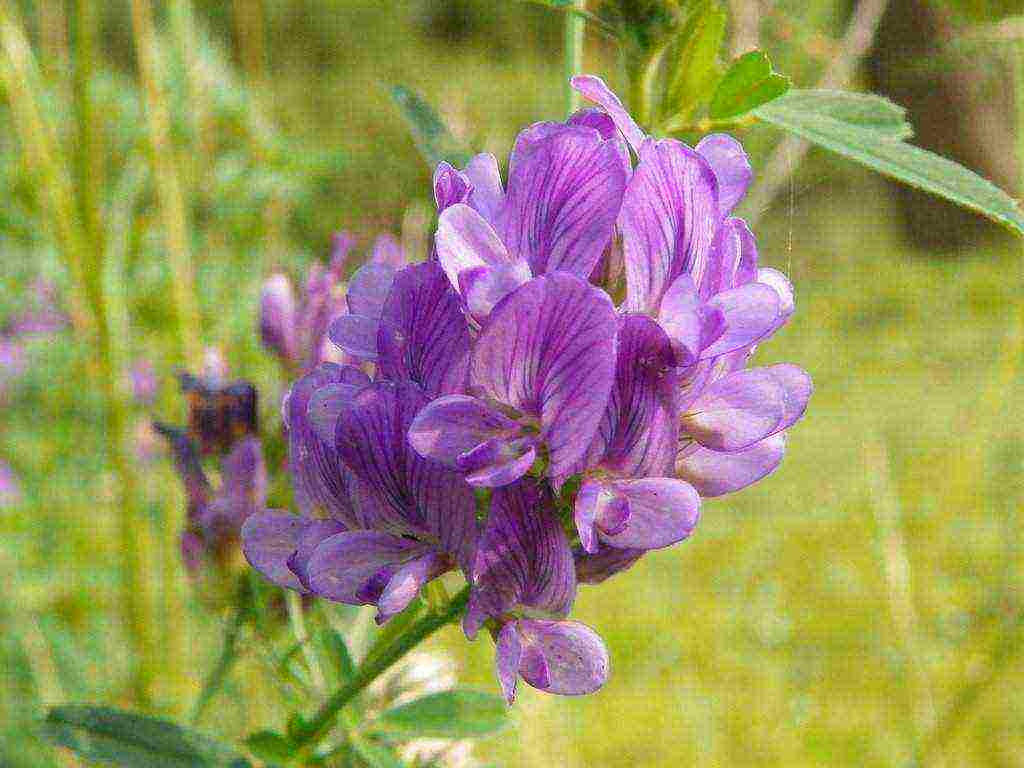
Alfalfa not only improves the structure of the soil and provides it with nutrients, but also suppresses the growth of weeds
It all depends on for what purpose at what time they were planted. You can cut them, preventing flowering, half a month before planting the main crops. Leave plants with beautiful and fragrant flowers (phacelia, lupine clover) in the garden longer - they will attract pollinating insects and those who eat pests to your garden. Remove these green manures before they scatter thousands of seeds around. Cereals (rye, oats) must be fully ripe. Their dry stems are suitable material for mulching, and the seeds can be sown next season. Legumes can be cut after harvest.
Siderata in the aisles must have time to be removed in advance, before they have outgrown the main crops, otherwise they will delay them in growth and may displace them.
It is usually necessary to plow the cut tops into the soil 2-3 weeks before planting the seedlings of cultivated plants. The seeding depth depends on the structure of the soil: in light soil it is 12-15 cm, in dense soil 6-8 cm is enough.
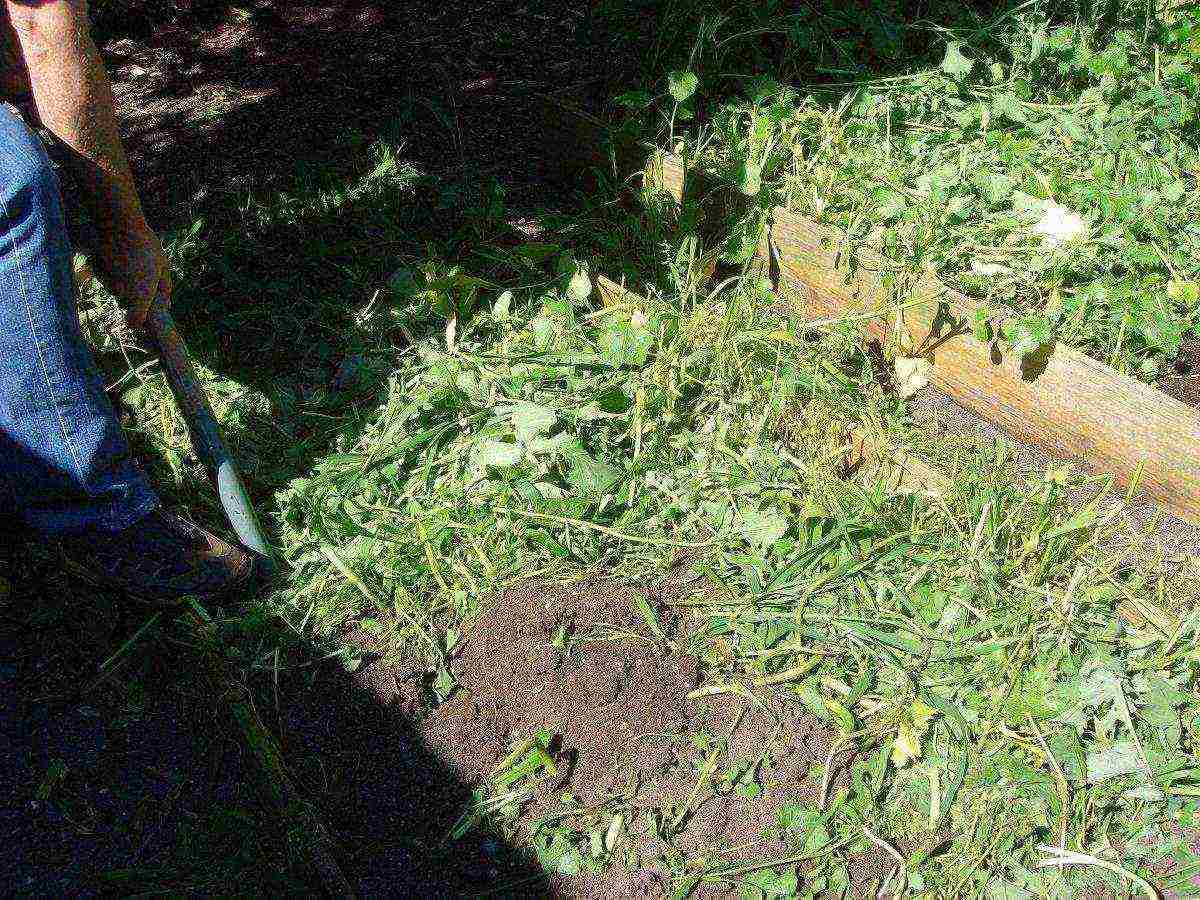
Another way is to plow in on the eve of winter. To do this, you need to dig up the siderata cut along with the stems and leaves with the top layer of soil. The mass of green plants will rot and become fertile humus. To speed up the ripening process, you can water the plant residues with a solution of the EM preparation.
It is necessary to plan a sowing scheme for green manure next year now, in August-September. Therefore, carefully study your site, think over what kind of cultivated plants you want to grow. And decide which green assistants will be successful "companions" for them in the future.
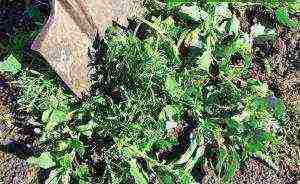
In order for the soil to be fertile, it must be "fed" with organic matter, ie. for it we have to grow special plants, leave plant residues or apply organic fertilizers. The quality of soil fertility depends on the energy of the buried organic matter.
Experienced agronomists understand this pattern well and try not to leave the field without "food". The organic matter buried in the soil will be processed by microorganisms, and in subsequent years new plants will use its energy.Thus, the soil is a kind of energy store for the future harvest.
In agronomic practice, green manure plants are grown especially for "feeding" the soil. They are sown in any free intervals of the growing season, when the main crops do not grow on the site.
Not a single day should the soil "walk" without plants: on a bare bed, humus burns out in the sun. To protect against this adverse phenomenon, experienced gardeners use post-harvest, post-harvest and stubble crops of green manure.
Siderata, especially perennial (clover, alfalfa, sylphia), are sometimes grown in a separate area, where they are mowed, crushed and then brought to the desired area. So it is recommended to use mowed lawn grass - to bring it to the garden and dig in, resulting in green fertilizers.
Green fertilizers include any fresh grass (it can be young shoots and leaves after cutting shrubs), mown and transferred to the garden bed. Siderata also belong to green fertilizers, but they are specially sown and dug up at a certain stage of development at the place of their growth.
If we compare green manure and green mass with dug in, the effect of them is the highest, since an additional beneficial effect of the root system is manifested.
Pros and cons of siderates
Growing any crop has its pros and cons. This applies to green fertilizers in general and green manures in particular. TO positive properties should include the following:
- the soil becomes a habitat for beneficial microorganisms and earthworms that feed on plant residues;
- permanent cover of the soil surface protects it from degradation;
- erosion protection, especially under perennial plants and on slopes;
- rye and other plants left for the winter contribute to snow retention;
- many green manures (mustard, oats, annual ryegrass, alfalfa, clover) have a deep root system, which extracts calcium, phosphorus, magnesium and other macro- and microelements from the depths into the upper soil layers;
- regulate the ratio of nutrients, and legumes also enrich the soil with nitrogen;
- when green fertilizers decay, a large amount of carbon dioxide is formed, which vegetable plants use for photosynthesis;
- green manures are competitors for weeds that cannot withstand shading and allopathic influences (i.e., cannot withstand the effects of chemical excretions);
- some plants (mustard, radish, tagetes) regulate the number of nematodes;
- ultimately, fertility is restored and increased;
- practically do not require chemical protection against diseases and pests (only in very hot and dry weather, the sprouts of mustard and radish are attacked by a cruciferous flea).
Naturally, in the many years of work with green manure, some of them were noted. negative properties, namely:
- some green manure plants share common pests and pathogens. This is especially true for plants of the cabbage family (for example, cruciferous flea, keela, bacteriosis), legumes (weevil, aphids) and oats (common nematode species with root plants);
- if it is late with incorporation into the soil, some green manures have time to seed and clog the garden bed;
- in case of a delay with the incorporation of green mass and its lignification (for example, rye left before flowering), additional application of nitrogen fertilizers is required;
- there are no universal green manure in relation to acidity and granulometric (sandy or clayey) composition of the soil;
- there are no universal green manures in terms of sowing, care and time of incorporation into the soil;
- green manures are also plants and require watering and additional fertilization;
- additional costs for soil preparation, purchase of seeds and their incorporation into the soil;
- the visible positive effect is not clearly manifested, but often stretches over several years.
General secrets of green manure technologies
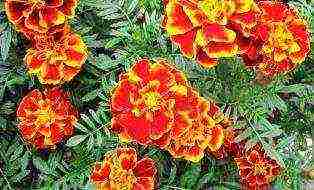
tagetes
The use of green manure in the garden has general agrotechnical principles, regardless of the type of plants and soil. It should be noted that the technological methods recommended in the scientific and industrial literature for use in large farms are not always suitable for the gardener and gardener.
The use of green manure should be started with careful planning of the alternation of vegetable plants in the garden, so that after digging them, 2-3 weeks remain before the subsequent sowing. If the weather is dry, then watering is carried out before sowing, and after sowing the soil is rolled up.
Seeding rates are regulated according to the following principle: if green manure is planned to be dug at a younger age, then the seeding rate should be higher. They use different sowing methods: manually and with a manual seeder, in rows or randomly. It is advisable to grow Tagetes by seedlings.
It is advisable to grow perennial green manure plants (alfalfa, clover, sweet clover, sylphia) for green fertilizers in perennial culture, and transfer the mown green mass to the garden bed, but in this case, the effect of additional loosening of the upper soil layer by the root system and the transfer of nutrients from the lower soil layers is excluded ...
Perennials become green manures in the last year after the aftermath regrowth. Green manure plants do not require special seed preparation, except for processing legumes with nitragin. The decay of green mass is facilitated by its processing before digging with preparations of beneficial microorganisms (for example, Baikal EM).
Siderata do not require chemical protection against pathogens and pests, except for the cruciferous flea, against which watering and spraying with cold water are effective. Digging in green manure is carried out manually or with a walk-behind tractor.
If the plants are not tall, then it is convenient to work by hand with a pitchfork. Tall plants are first bent down, crushed and added dropwise with a sharp shovel. When using a walk-behind tractor, it is advisable to first lay tall plants by rolling.
Legume siderates
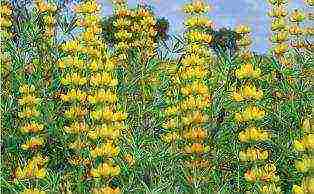
lupine yellow
A very valuable group of green manure, which gives a large green mass and, thanks to nodule bacteria, assimilates atmospheric nitrogen. This is a large group of plants that differ in biological characteristics.
Among them there are annuals and perennials, demanding for heat and cold-resistant, with a different range of requirements for soil acidity and moisture. Before sowing, it is advisable to treat the seeds of legumes with bacterial preparations of nodule bacteria, which are designed for each species.
Legume siderates are not used before growing vegetable varieties of peas, beans, cowpea, tetragonobus, soybeans and other legumes.
Lupine... For siderates, various annual types of lupine are used: narrow-leaved, or blue, yellow and white. For green fertilizers, you can also use mowed young plants of perennial lupine.
Different types of lupine show unequal demands on heat: the most demanding is white, and the least narrow-leaved. Withstand frosts down to minus 5-6 ° С, and perennial winters well. All species are demanding on moisture and easily tolerate high soil acidity, but react poorly to salinity, high calcium content and waterlogging.
The sowing method is narrow-row. Seeding rate: yellow up to 1.75 kg / 100 m2, narrow-leaved - up to 2.0 and white - up to 2.3 kg / 100 m2. Lupins are leguminous plants that carry the cotyledons to the soil surface, and therefore the depth of planting seeds, despite their size, should be up to 5 cm. With deeper planting, seedlings are thinned out.
It is added in the period of the beginning of the formation of the beans. The yield of green mass is up to 3-4 kg / m2.
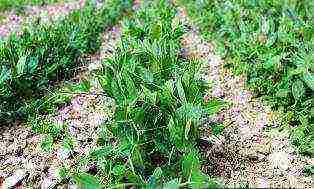
fodder peas
Peas... Annual. To obtain siderates, varieties of grain and fodder, or pelushi, are used. Post-harvest residues of vegetable and sugar varieties are an excellent green fertilizer.If grain, vegetable and sugar peas have white flowers, then pelushka has red-purple flowers and speckled angular seeds.
Peas are cold-resistant plants with a short growing season. Demanding on moisture, but does not tolerate waterlogging and acidic soils. In the initial phases of development, it is weakly competitive with weeds.
Sowed from early spring to early September. The sowing method is narrow-row, with a row spacing of 15 cm. Sometimes it is sown together with oats, barley or mustard. Seeding rate in clean sowing - up to 3 kg / 100 m2. The seeding depth is 6-7 cm, and on dry soils it can withstand a deepening of up to 8-9 cm.
It is instilled in the phase of mass bean formation or after harvesting of vegetable and sugar sorts of beans-shoulder blades. The yield of green mass is up to 2 kg / m2, and of tall varieties - even up to 3 kg / m2.
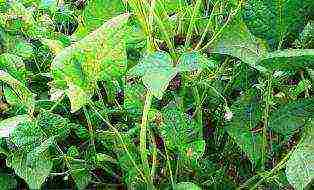
vegetable beans
Broad beans... Annual. To obtain green manure, small-seeded fodder varieties are used. The green mass of vegetable varieties with large seeds is also used in the same way, i.e. crushed and added dropwise only after harvesting the shoulder beans.
Beans are cold-tolerant and moisture-demanding plants. They react negatively to soil acidity. Sowing dates are from early spring to early September. The sowing method is wide-row - up to 40-45 cm. The seeding depth is 6-8 cm. The seeding rate strongly depends on the size of the seeds, therefore 40-50 pieces are sown. / m2.
Care consists in loosening row spacings and watering. Close up in the soil after the formation of the beans on the first tier. The yield of green mass is up to 3-4 kg / m2. In addition to clean crops, it works well in mixed crops with peas, vetch and corn.
Vegetable beans... An annual plant that is demanding on heat and moisture. The green mass of plants is usually used as green manure after harvesting the beans on the shoulder blade. In the gardens, beans are grown on a shovel, after harvesting which the green mass is crushed and added dropwise. The yield of green mass is up to 1.5 kg / m2.
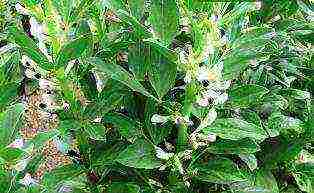
horse beans
Vigna, or cowpeas. For green manure, grain varieties with small seeds are used. Vegetable varieties are also used after harvesting shoulder beans. Demanding heat. Drought-resistant annual, which allows it to be successfully used in southern horticulture. Methods of growing cowpea, like beans. Sowed from early May to mid-July. Seeding rate - up to 0.5 kg / 100 m2. The yield of green mass is up to 2 kg / m2.
Vika spring and winter, or furry. In order to enrich cereal green manures (barley, oats and rye), experienced gardeners always sow vetch with them. Spring vetch is sown from early spring to late August, and winter vetch is sown together with winter rye. The vico-oat mixture is added dropwise at the beginning of flowering. On the roots of the vetch, nodule bacteria develop well, which enrich the soil with nitrogen.
Depending on the availability of seeds, different proportions of seeding rates are selected. Usually, 1 kg of spring vetch and 0.5 kg of oats are used per 100 m2. An excellent yield, up to 5 kg / m2, gives a vetch-oat-ryegrass green manure mixture (1.4 kg of vetch, 0.7 kg of oats and 0.3 kg of annual ryegrass per 100 m2).
The peculiarities of joint sowing of winter vetch and rye include some discrepancy between the phases of development of these plants. Therefore, winter vetch is sown 15 days earlier than rye (seeding rate - 1 kg / 100 m2), at a depth of planting of its seeds by 3-4 cm.After sprouting vetch rye is sown across the rows, reducing the seeding rate to 0.8 kg / 100 m2 ... The vico-rye mixture winters well, and it is added to the green manure in the first half of May, before the earing of rye begins.
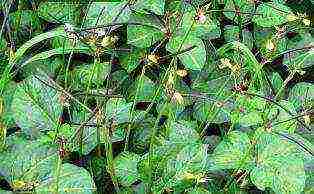
corn cowpea
Seradella, or bird's foot. On light sandy soils for green manure, this annual, very valuable legume is perfect. The advantages of seradella include the ability to withstand shading, which allows it to be sown in the aisles of sweet corn and the garden. It grows back quickly after mowing.
It is not demanding on heat and can withstand frosts down to minus 8 ° C.An excellent honey plant, giving bribes until late autumn. Flowering begins 40 days after germination. The sowing method is narrow-row (row spacing - 15-20 cm) at a seeding rate of 0.5 kg / 100 m2. The yield of green mass is up to 2.5 kg / m2.
Mushroom herb, fenugreek... Two types are used - hay fenugreek and blue. The first species is undersized, with long beans (up to 15 cm) and large seeds, and the second is tall (up to 70 cm), with small beans (only up to 0.5 cm) and small seeds.
These two annual species are grown to produce the mushroom herb spice, medicinal raw materials and feed. In the garden, they can be successfully used to obtain green manure. These species are relatively drought-resistant. They do not tolerate acidic soils.
Sown in April-July. The method of sowing blue fenugreek is wide-row, with row spacing up to 40 cm, and hay - somewhat narrower, up to 30 cm. The seeding rate of hay fenugreek is up to 0.5 kg / 100 m2, and blue - 0.3 kg / 100 m2. The seeding depth is up to 2 cm. The yield of green mass is higher in blue fenugreek and is up to 2 kg / m2, and in hay - up to 1 kg / m2.
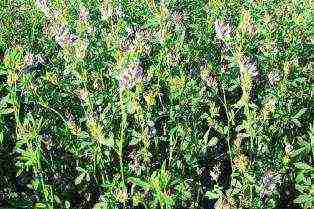
alfalfa
Alfalfa... Like other perennial species, it is advisable to grow alfalfa on a plot for 2-3 years. In the early years, it is mowed, and the green mass is transferred for green fertilization to another area, and at the end of use it is dug up like green manure.
High heat and drought resistance allows it to form a high yield of green mass without irrigation. Salt-tolerant and brines saline soils. She is demanding on light and cannot withstand shading. Does not tolerate swampy and acidic soils.
The seeding rate in conditions of moderate moisture is up to 150 g / 100 m2, and in the steppe zone - up to 120 g / 100 m2. Seeding depth is no more than 3 cm. Sowing method - random or wide-row, with a row spacing of 25-30 cm. It will grow well after mowing. Gives up to five mows per growing season. The total yield of green mass for all cuttings is up to 7 kg / m2.

clover red
Different types clover... Perennial red clover is usually used, although annual species are quite suitable for southern truck farming: Shabdar, Alexandrian and incarnate. Red clover is used like alfalfa, and annual species are dug up in the year of sowing.
All types of clover require moderate moisture. More shade-tolerant than alfalfa. The optimum soil response is neutral and slightly acidic. Clover gets sick when it is re-grown in the same place. Sowing is repeated after 4-5 years.
Growing techniques are the same as for alfalfa. The yield of green mass in the second year of cultivation is up to 4 kg / m2. For southern irrigated areas, annual types of clover shabdar and bersim are perfect, and for northern and western ones - incarnate clover, but the latter grows poorly and gives one cut.
White clover, or creeping clover, which is used to decorate some types of lawns, is not used specifically for green fertilizers, but the grass mowed on lawns is transferred to the beds for green fertilization.
Melilot white and yellow... Biennial plants that are frost, drought and salt tolerant. They do not withstand waterlogging and acidic soils. The stem grows woody quickly, so it is mown at the beginning of flowering.
Donnik is an excellent meliorator. Its roots penetrate up to 3 m, loosening the subsoil layers and transferring beneficial nutrients from the lower layer to the upper one. Seeding rate - up to 250 g / 100 m2.
In the first year of life and from the first mowing to the second, green mass is used for green fertilizer, and the aftermath is dug into green manure. The yield of fresh, non-lignified green mass, suitable for green fertilization, is high and amounts to 4 kg / m2.
Cereal siderates
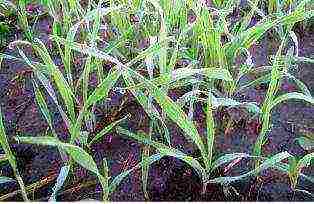
rye
Winter rye... A favorite plant of gardeners for late autumn and early spring green manure. Cold and frost-resistant plant with a well-developed superficial root system, which perfectly loosens the upper layers of heavy soils. It bushes well, which helps to suppress weeds.
Features that gardeners should consider: very rapid growth in height in spring, which can cause overgrowth of the green mass. An excellent predecessor for all vegetable crops. For green manure, rye begins to be sown in August and continues until mid-October.
Summer crops of rye are used for autumn digging, and autumn crops for spring. Seeding rate for green manure up to 2.5 kg / 100 m2. The seeding depth on heavy and moist soils is up to 4-5 cm, and on sandy and dry soils - up to 5-6 cm. Deeper seeding of seeds weakens young rye plants.
The yield of green mass fluctuates up to 1.0 kg / m2 in autumn and up to 3 kg / m2 during heading. Rye is an excellent precursor for all vegetable plants, but in case of late planting in spring, the green mass quickly coarsens, which requires additional nitrogen fertilization during digging.
Barley... Usually, spring varieties are used for spring green manure, and winter varieties for autumn and spring, like rye. Cold-hardy, but spring varieties freeze out. In comparison with other grain crops it is drought-resistant. Poorly tolerates acidic and sandy soils. The root system is not sufficiently developed and poorly uses inaccessible reserves of phosphorus and potassium, therefore phosphorus-potassium fertilizers are desirable for it.
Growing rapidly. Perfectly loosens the topsoil. Spring barley is sown in early spring. Dig in at the end of May. The beds are used for summer crops of root crops, green crops, sugar corn, vegetable marrow, summer planting of potatoes, various types of cabbage. Sometimes sown in August to obtain autumn green manure.
It bushes well during autumn sowing, but due to the long days it does not turn to heading. Can be left in the garden before winter. In this case, the spring varieties freeze out, but they perfectly retain the snow.
The seeding rate for obtaining green manure is 2-3 kg / 100 m2. The sowing method is narrow-row. The seeding depth of seeds on heavy soils is up to 3-4 cm, and on sandy soils - up to 6 cm.The yield of green mass depends on the phase of plant development: in the tillering phase - up to 1.0 kg / m2, in the heading phase - up to 2.5 kg / m2.
Oats... It is cold-resistant and demanding on moisture, but does not tolerate high summer temperatures. Sow in early spring. Often used in mixtures with peas and spring vetch, this approach contributes to the enrichment of the soil with nitrogen.
It is characterized by a very rapid development of the root system, which extracts nutrients from poorly soluble forms and deep layers of the soil. Insensitive to the acidity of the soil solution.
The technology of cultivation and use is close to the technology of growing barley, but it should not be sown either before or after root crops, with which it has common types of harmful nematodes. In addition, the sowing depth should be somewhat shallower.
Westerwold annual ryegrass... An excellent green manure for different types of soil with a wide range of acidity, except for very light and quickly drying sandy ones. In terms of growth rate, it has no analogues among cereals. The best sowing time is early spring.
Seeding rate - 0.3 kg / 100 m2. The sowing method is narrow-row. The seeding depth is up to 3 cm. It grows well after mowing, which allows it to be grown on a separate site, followed by transportation of the green mass to the desired place. Productivity - up to 3 kg / m2. An excellent precursor for all vegetable plants. Seeding of plants should not be allowed, otherwise contaminating self-seeding is possible.
Cabbage and other green manure plants
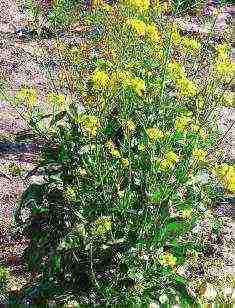
mustard
Mustard... To obtain siderates, two types of mustard are used: gray and white. Their biological features are very similar. White mustard has small pale yellow seeds (1000 seeds weigh 5-6 g), and gray mustard has large dark brown seeds (1000 seeds weigh up to 25 g).
The root system is deep and has a strong digestible capacity. Does not tolerate very acidic, heavy and waterlogged soils.Blue mustard, due to its increased drought resistance, we recommend growing on green manures in more southern regions, and white mustard - in fairly humid northern and western regions.
Sowing dates: from early spring to mid-September. The seeding rate for white mustard is 200 g / 100 m2, and for gray mustard - up to 150 g / 100 m2. The seeding depth is 2-4 cm. After sowing, the soil is rolled up. In dry and hot weather, young plants are severely damaged by the cruciferous flea.
The yield of green mass during the period of mass flowering is up to 4-5 kg / m2. Due to common diseases and pests, mustard cannot be a precursor for all types of cabbage, radish and radish.
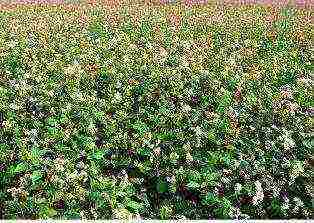
buckwheat
Buckwheat... Excellent green manure. The seeds germinate quickly and suppress weeds. After 25-30 days, it begins to bloom and attracts pollinators to the garden. Demanding on heat and moisture. Develops a deep root system and extracts hardly soluble nutrients from the deep layers of the soil, but does not tolerate the high acidity of the soil solution.
Does not fix nitrogen, but converts insoluble phosphorus compounds of soil and fertilizers into readily available forms for subsequent vegetable plants. Sowing dates for green manure: from late April to early September.
They are dripped in at different growth phases, but preferably before mass flowering, when the stem has not yet become lignified. After digging, it inhibits the germination of seeds of carrots, parsley and parsnips, but does not affect the planted seedlings of other vegetable plants.
The seeding rate is 1 kg / 100 m2. The seeding depth is up to 5 cm, and on light and dry soils it is increased to 6-7 cm. The yield of green mass at the beginning of flowering is up to 2.0 kg / m2, later it increases, but the buried green mass decomposes more slowly.
Phacelia tansy... Demanding heat. The height of plants during the period of mass flowering is up to 80-90 cm. Excellent honey plant. Seeding rate - 100 g / 100 m2. The seeding depth is 2-3 cm. The sowing method is narrow-row (15-20 cm) or wide-row (30-45 cm).
Crushed and dug up during the period of mass flowering. The last sowing period is 60 days before the first autumn frosts. It quickly decays in the soil. The yield of green mass is up to 2 kg / m2. An excellent precursor for all vegetable plants.
Tagetes, or black shaves. Demanding on heat and moisture. Requires neutral soils. An excellent phytosanitary that cleans the soil from nematodes. The only green manure that requires planting through seedlings. Usually, tall varieties are used, which give a large green mass.
Seedlings are grown in a separate bed, in a seedling box or greenhouse and are planted in the permanent place of the vacated beds. With a sufficient number of seeds, tagetes can be grown in a seedless way.
The seeding depth is no more than 1.5-2.0 cm. The seedling planting scheme depends on the height of adult plants and is usually 45x30 cm. Crushed and dug up as needed or in late autumn. An excellent precursor for all vegetable plants.
Sylphia pierced-leaved... Frost-resistant perennial from the Aster family, which is sown in the background of a plot with a row spacing of 70-90 cm. It grows well on different types of soil, incl. and salted. Plant height - up to 2 m. It blooms beautifully with large yellow baskets.
Provides an exceptionally large green mass, the yield of which reaches up to 7 kg / m2. Mowed during mass flowering, crushed and applied to the required areas. In one place it grows up to five years. Grows well. To obtain high yields in the spring, fertilizing and watering are carried out annually. Very decorative. Green mass is a good fertilizer for most vegetable plants, except for the aster family (lettuce, chicory, scorzonera, oat root).
Weeds... All freshly chopped and dug weeds are excellent green fertilizers. Two immutable rules apply to them.Firstly, they are crushed and dug up only before the beginning of flowering (they quickly form seeds), and secondly, they avoid using perennials (wheatgrass, sow thistle, bindweed), the remnants of rhizomes, which will clog the garden bed even more.
Post-harvest residues cultivated plants, as an addition to green manure. After harvesting, each vegetable plant leaves a certain amount of valuable organic matter in the form of roots, stems, leaves. Of all vegetable plants, broccoli cabbage (7-9 kg / m2) and sweet corn (4-5 kg / m2) give the highest yield of green mass.
No matter how many plant residues, and whatever they are - dry or fresh, but they must be returned to the soil. The soil takes a long time to "digest" dry and lignified residues. When they are introduced into the soil, it lacks its own energy for the development of useful microflora.
Therefore, if a piece of straw, sawdust, crushed bark, and high-moor peat are added dropwise, then 30 kg of ammonium nitrate is added for each ton of organic matter, it can be replaced with an equivalent amount of fermented mullein or bird droppings.
Thus, having mastered the basic elements of the "magic" of fertilizing the beds with green manure, start actively maintaining fertility at a high level and get pure organic products, vegetables and fruits, in any conditions. Help the soil regain strength.
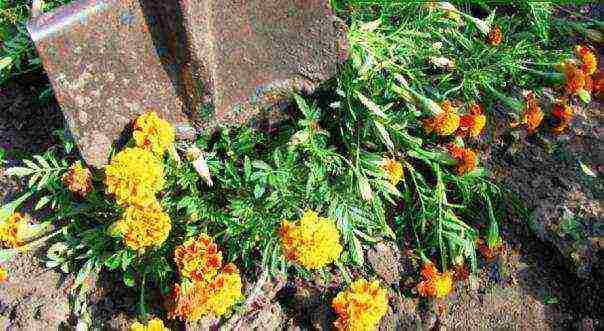
Xenovy Owl
Any of the richest soils are depleted over time. All plants, cultivated and weed, constantly select the necessary nutrients from the earth for their life. Therefore, the soil must be constantly maintained with organic and mineral substances.
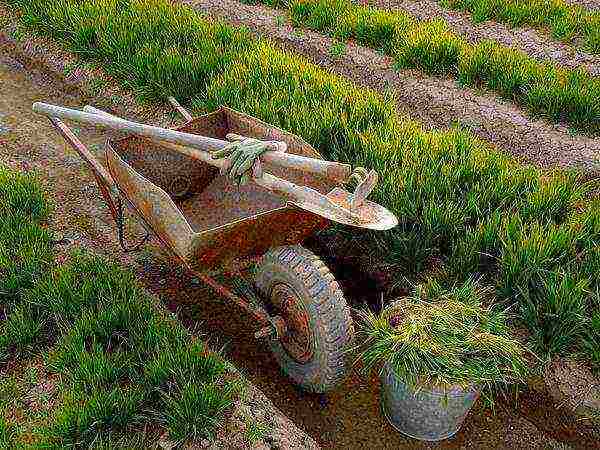
Plants themselves can serve as fertilizers
It only at first glance seems that the only one who can help restore the soil is a person. Nature long ago and wisely arranged everything in such a way that the elements leaving the earth into the plants, together with the same plants, return back to the earth, realizing a great incessant circulation of substances. And we, following this law, can very successfully maintain the fertility of our soil, and with it - and get the maximum possible yields.
Plants = fertilizers
Yes, plants themselves can be wonderful fertilizers. Moreover, they can be used in three forms:
- Natural (live) - when the green mass of plants is embedded in the ground
- Rotten (compost)
- Liquid - in the form of an infusion of green mass of plants
Green manure as fertilizer
For the sole purpose of enriching the soil with nutrients, farmers plant special types of plants in unoccupied areas of the soil or as an adjacent crop. In the practice of agriculture, such a "green fertilizer" has been used since the time of Ancient Greece.
The Roman scientist and writer Pliny the Elder voiced the following thought in the 50-70s of our era: “Everyone agrees that there is nothing more useful than lupine, if it is embedded in the soil with a plow before the beans are formed or bunches of lupine cut off at the surface of the soil are buried near fruit trees and bushes of grapes ... This is the same good fertilizer, as well as manure. " That is, the remarkable ability of plants to fertilize the soil has been known for a long time - we can only enrich this knowledge with modern experience.
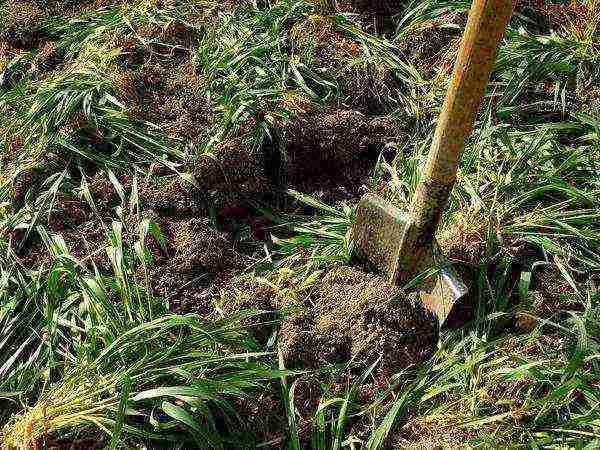
The benefits of siderates were known even in Ancient Greece and Rome.
All plants that increase soil fertility and are cultivated specifically for this have a common name - siderates... Green manure crops suppress the growth of weeds, cleanse the soil from diseases and pests, are used in the form of mulch and as a raw material for the preparation of composts and liquid fertilizers. Surprisingly, the organic matter that forms from the combination of sunlight, air and water is equivalent to manure, and sometimes much more effective than it!
The most commonly used green fertilizers are:
Legumes
- Fodder beans
- Vika winter, or shaggy
- Field peas, or pelushka
- Clover
- Lupine
- Lucerne
- Ciradella
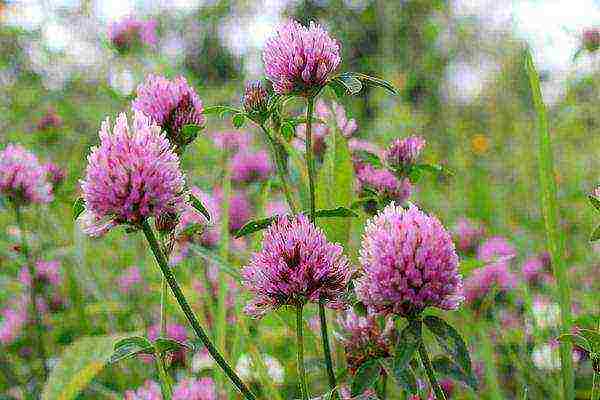
Clover
Legumes enrich the soil with organic matter, nitrogen, phosphorus, potassium
Cruciferous
- Mustard
- Rape
- Oilseed radish
- Rarepitsa

Many crucifers are excellent green manures.
These plants enrich the soil with organic matter, phosphorus and sulfur. In addition, mustard cleans the soil from wireworms, and oil radish actively suppresses the development of nematodes.
Cereals
- Oweight
- Winter rye
- Buckwheat
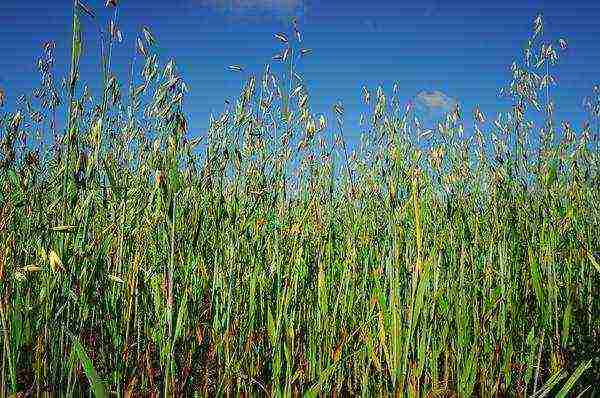
Cereals are often used as green manure
Grains enrich the soil with organic matter, nitrogen and potassium. Buckwheat increases the content of phosphorus and potassium in the soil and is recommended for heavy soils, especially in the aisles of fruit crops.
Almost all green manure plants can be used as feed for livestock.
Compost
One of the most "successful" fertilizers is compost. Almost everyone who has a dacha knows what it is. This is a very effective organic fertilizer, which is obtained by decomposition (overheating) of various organic substances.

Compost is an effective fertilizer
For the preparation of compost, you can specially grow some plants - such as sunflowers, alfalfa, comfrey. Or you can just take the remains of summer cottage cultivated plants, cut green manure and just any grass or fallen leaves.
What is not recommended to put in garden compost
- Flowering plants and plants with seeds
- Perennial rhizome weeds
- Garden waste affected by pests and diseases
- Insect pests, their larvae and eggs
- Garden waste after using herbicides (unless the herbicide manufacturer specifies otherwise)
- Feces of people and pets!
The next video is about how to prepare compost at your summer cottage. Andrey Tumanov shares his experience
Liquid "green" fertilizer
There is a way to obtain effective organic fertilizer much faster than long-term composting of plant residues. These are infusions, liquid fertilizers.
Why are these green fertilizers good?:
- First, they are absorbed by the plant immediately.
- Secondly, due to the alkaline reaction of the solution, the acidity of the soil decreases.
- Thirdly, many microorganisms enter the soil, the secretions of which have a protective effect.
How to Prepare Liquid Green Fertilizer
There are many recipes for making liquid fertilizer from green plants. This recipe is one of the most common.
A green mass of cut grass, tops, weeds hewed right from the roots, stepchildren (grass can be even with seeds) is put into the barrel about 3/4 (it is possible and "to the eyeballs"), and all this is filled with water to the top.
It remains to cover the top of the barrel. You can use it with a plastic wrap (then make a couple of holes in it for gas exchange), or you can just use any improvised lid. It is advisable to fix the film with tape or rope.
The resulting mixture is left for infusion and fermentation. A week and a half, and the green fertilizer is ready for use. Its color is dull green-yellow, the smell is corresponding to the fermented grass.
The following video will acquaint us in detail with the practical technology of making liquid green fertilizer. Konstantin, an experienced summer resident, shows and tells how this is done:
How to use liquid green fertilizer
The resulting infusion for dressing is used in a ratio of 1:10, that is, for a bucket of water - 1 liter of infusion. You should not make top dressing "thicker" - you can only harm the plant and burn its roots, as the infusion turns out to be quite concentrated. If you really want to make the top dressing "stronger", conduct the experiment first on one plant, and only then put all the beds at risk.
After using all the infusion, the remaining grass can be poured over with water again and in a day or two can be used for irrigation without dilution.
Olga Platonova talks about her recipe for complex liquid green fertilizer in the next video.
Tips from summer residents
- Beautiful foliar feeding will serve as an infusion of nettle, alfalfa or comfrey with tansy, shepherd's bag and chamomile. It is good to add ash and bone meal there.
- Liquid green fertilizer made from nettle, woodlice, sweet clover, starwort, bluegrass and fescue is perfect for feeding any vegetables
- Dandelion Leaf Fertilizer does not fit for cabbage and beets
- For liquid fertilization not recommended to use horse sorrel, wheatgrass, quinoa and buttercup, because, along with useful ones, they also contain harmful substances that inhibit the growth of vegetable crops
- I do not adviset use cereals for liquid fertilizer - they do not decompose well
- An indispensable fertilizer for acidophilic plants - hydrangea, azalea, rhododendron and camellia is "cotton meal", which is made from cake after squeezing oil from cotton seeds
- In the fall, liquid fertilizer is useful to shed all future beds.
- Some summer residents advise adding a little to the raw material for fermentation urea
- The soil watered with nettle infusion attracts earthworms
And one more useful advice from an experienced summer resident. In the video - the preparation and use of liquid fertilizer from nettle.
So we have finished a short excursion into the world of green fertilizers. And we were convinced that this is simple, natural, and very useful for the soil of our summer cottages (if, of course, we do everything in moderation - that is, remember constantly: a lack of knowledge cannot be replaced by an excess of fertilizers!)
There are still two months of summer and a whole autumn ahead, and during this time you can significantly enrich your land plots with living green organic matter!

